

 Stein B ach
Stein B ach
t he




 Stein B ach
Stein B ach
t he

Many Manitobans know that southeast Manitoba is a fast-growing region of the province. Home to our third largest city, Steinbach, it continues to attract new residents from around Canada and around the world.
And while growth can be positive in many ways, it is sometimes difficult to ensure that infrastructure and facilities keep up with that growth. As just one example, for many years now, local graduations and other large events and banquets that otherwise would have been held in Steinbach have been instead held in other places, often Winnipeg. This is because Steinbach simply doesn’t have a meeting

Steinbach’s new event centre.
place large enough to host these events. The growth of the City of Steinbach has literally outgrown some of its recreational infrastructure.
This was actually foreseen many
April was so loaded with events that my calendar looked like a full time work schedule.
The forecast for the summer seems to be a continuation of this comradery of Geocachers.
There are numerous types of events with some being an hour or two ranging all the way up to being a full weekend of camping. The ones that are an hour or two usually are listed as a half hour event, but are never that short.
A coffee event is just that. We gather over a cup of coffee and talk about various topics from a new Geocache to the weather (as it relates to caching...). We have showed up at local venues at all times of the day. One week this spring there were people turning up at six in the morning for a

years ago and successive City of Steinbach councils and area representatives tried to develop plans to address the problem. Much of the discussion centered around replac-
full week straight including during a snowstorm. We have been to these events as early as four in the morning. Don’t worry though, they happen at normal times as well.
Another similar one is an ice cream event. These are usually at a different ice cream venue, so we get to try out all of these places to see if there is a favourite place to go. The conclusion from the past events is that we need to check them out further to decide which is best. It is a tough chore to do this, but we will keep trying. Of course there are the obligatory conversations.
One of my favourites is the CITO event. CITO is an acronym for Cache In, Trash Out. This is where we show up and grab a garbage bag and fill it up with trash. Unfortunately, Winnipeg is loaded with litter which makes these events so




Excessive government spending, typically rooted in socialist ideology, has long been a contentious issue in economic discourse, with proponents arguing for its stimulative effects and detractors highlighting its detrimental consequences. This article aims to delve deeper into the multifaceted impacts of profligate spending on inflation, debt, employment, and overall economic stability. By examining economic theory, we hope to make clear the long-term implications fiscal imprudence has on society.
One of the immediate consequences of excessive government spending is the inflationary pressure it exerts on the economy. When the government injects large sums of money into circulation through fiscal stimulus programs or deficit spending, as the Government of Canada has, it increases aggregate demand, leading to a rise in prices. This phenomenon, known as demand-pull inflation, erodes the purchasing power of consumers and diminishes their standard of living. Thus, it may come as no surprise to anyone that Canadians are experiencing a lower standard of living today (NBF via Statistics Canada and Bureau of Economic Analysis).
Moreover, excessive spending can also fuel costpush inflation by driving up production costs. As government demand for goods and services increases, so does the cost of inputs such as labour and raw materials. These higher production costs are often passed on to consumers in the form of higher prices, exacerbating inflationary pressures.
Historical examples abound, such as the hyperinflationary episodes in Zimbabwe and Venezuela, where governments resorted to excessive money printing to finance unsustainable spending commitments. In both cases, the result was runaway inflation, currency devaluation, and economic collapse, underscoring the perils of fiscal imprudence. Many regard these instances as unique to those regions,




There is nothing wrong with dogs. For the most part, we get along just fine, despite the fact that they are a lot of work. They are also very demanding . . . and nosy. They poke their noses in places where you would rather they did not! And they bark! And they are just a little too eager to please.
Cats, on the other hand, know how to respect your space. Cats are independent and self-sustaining. They live and let live but reward the attentive owner with a pleasant purr when you treat them to petting. They like to play but do it gently, chasing a piece of crumpled paper around a tile floor, or in the case of my friend’s cat, hiding paper clips in unlikely places. They meow politely when you come home after a hard day’s work, and they don’t accost visitors when they come to the door.
I have had both cats and dogs, but all my early memories were of dogs. My grandfather had the only cats I knew, always a tabby named Timothy and always the bane of my grandmother’s existence, so my first cat impressions were not favourable. My earliest pet was a German shepherd dog named Laddie. I much preferred his lady friend, Lassie, a mixed breed blonde who was softer and gentler. There were two cocker spaniels, Tootsie and Sheik, who were with us briefly when my maternal grandmother died, but they were lap dogs, not kid friendly. As for cats, we lived on a farm back then and the cats were restricted to the barn. I never had a chance to get to know them.
and paws covered in ice. Somehow, she had escaped her abductors and had come right home.
We moved and at last, I could get a cat. Her name was Josephine, JoCat for short. She was a black and white house cat that we illegally harboured in our main floor apartment where she could enter and exit through the window. She was our eldest daughter’s nursemaid. JoCat would admonish Lori by batting her hands away from dangerous things such as the electrical wall outlet. JoCat kept a close eye on her when she was sleeping and was always patient with the clumsy attentions of a very small child.

The next dog I remember adopted us. He was a purebred black and white spotted Dalmatian hunter we cleverly named Spot. He just showed up and refused to leave. Turns out he was a runaway and, one day, his owner showed up on horseback to claim his property. We felt bad but said goodbye to Spot. A week or so passed, and then Spot was back. We had to call his owner even though we suspected that he was not a kind man.
The next dog I particularly remember was a golden lab called Buster who used to go fishing with me early in the mornings in the icy cold mountain creeks of the East Kootenays in B.C. He was a nice companion, but I felt no personal commitment.
I was 15, before a pet cat entered my life. The cat was a caramel spotted short hair my mother named Peanuts. I hated the name but loved the cat and to this day, I feel guilty for punishing poor Peanuts for chasing a bird. Well, I was only 15.
We had two more dogs after that: a little white, part-coyote farm dog who was stolen one wintery night right off the street. By this time, I was married, and Glenn and I were heartbroken. We called the radio stations to get the word out and did whatever we could to get Suzie back, but to no avail. Then about a month later, a scratch at the door revealed a very sad looking Suzie, her coat
he discussion this month is: cats or dogs, which is better? I’ve owned both. In fact, I –well, my family, really – have owned many, many cats over the years, and only two dogs. It’s not that the cats weren’t good enough, it’s that they kept “running away”. We were very nice to them, so I presume my parents’ story was misleading; the cats got run over by cars or eaten by owls or coyotes or something when they were out. (I know, “you should keep your cats locked up,” but… well, we didn’t.)

She had kittens once and she would bring the father in through the window in the middle of the night to see his offspring once they got bigger.
Alas, we ultimately had to leave that apartment for a bigger one that was on the second floor. JoCat had to go back to the farm – or so we told the girls. Finally, we moved into a house, and it was time for a family pet.
This was our last dog, Trelawney, a golden retriever we bought for our girls, although he was mainly Glenn’s dog. He was with us for many years until at last he had to be put down because he had cancer.
At that time, I also realized a dream: a purebred chocolate point Siamese cat, a female, chosen because she was supposed to be hypoallergenic. You could have fooled Shauna who was allergic. We named her Tuktoyaktuk, Tuk for short. She was sleek and beautiful and well behaved, and she also had kittens. Sadly, we believe an owl got her when we were out camping.
Later, there was a pretty little female named Lilac, a gift my allergic motherin-law returned to us. She became Lori’s best friend.
My last cat was also a Siamese, this time a lilac point and a male. He had very large ears, so I named him Charlie for Prince Charles who was similarly endowed. Charlie was a very commanding cat. He resented my leaving him when I got elected and had to spend so much time in Ottawa. One time, when Glen was coming to join me for a weekend, Charlie watched him get ready then left Glenn a message – “spraying” his briefcase, an act that only became evident on the plane when Glenn could distinctly smell cat!
Now I have no cats. I travel too much, and I have nowhere to leave a pet when I go, but If I ever settle down and get a pet, it will be a cat. For the time being, I have to settle with the feral cat who lives under my front steps in winter and shares her food with the blue jays in spring.
The two dogs of my life are Trelawney, a golden retriever who grew up with me, and Penny, a dachshund who lived seventeen years until she passed last fall. (Moment of silence.)

Trelawney was an ill-behaved lug of a dog who drooled and swept things off coffee tables with his big tail. He trained us to keep anything edible that we valued high up and far back from his inquisitive snout. Heaven help eight-year-old me, taking him for a walk on a leash, if he saw a cat or anything that took his fancy because my puny body couldn’t hold him back. Gosh, I loved him.
Penny was just small enough to travel inside the passenger section of an airplane under the seat in front of me. She was exceptionally soft and built like a cat: almost slinky when you picked her up, not wiry at all. Very cuddly. (Cats are cuddly too, except they don’t necessarily want to be.) I got her when I was 40 because my husband was pretty clear that he didn’t want another baby. There was an ad on Kijiji for this seven-monthold puppy, and I went and picked her up from a family on the other side of Toronto who decided not to keep her.
Now, it turned out that we were Penny’s fourth home. She was born by a breeder in Oklahoma, sold to another breeder in Steinbach who couldn’t keep her because she (the second breeder) became ill, so sold her to the people in Toronto, then sold her to us. She was pretty nervous when I picked her up, but she eventually found her voice, which it turns out was very loud. Penny was a barker. I tried everything recommended to keep her from barking (except a shock collar) but the only thing that would work was to pick her up and reassure her that everyone was safe.
As a small dog, she never controlled her bladder all that well, particularly in the winter. During her last year with us, as her dementia solidified, we got a mop and bucket and kept it at the ready to deal with dog puddles several times a day. What could we do? How do you get mad at a little creature who will lie down beside you, rest her long chin on your lap and look up at you?
Every day Penny lived with us, I took an allergy pill. That only barely kept my wheezing in check most of the time, and only if our bedding had been changed in the past five or six days. With a cat, I wouldn’t last 15 minutes. That I could live with Penny at all points to another reason that I am on Team Dog: when it comes to allergies, cats are one of the biggest offenders out there. There is a protein known as Fel d1 produced by cats, and it is “stickier” than most pet allergens. And more people are allergic to it. Aside from my own experience, I can objectively say that dogs make better pets. They are generally of a more social nature. You know the joke about cats clawing you when you pet them in a way they don’t want to be petted? That joke is funny because it’s true.
Dogs are also trainable. I’m not saying that cats can’t be trained, just that they usually won’t. Dogs respond to our commands. You tell a dog to come, it generally will. Tell it to sit, it will at least think about it. Cats? You have to use all sorts of “psspsspss” noises when trying to get a cat to come to you. And really, it will only respond if it is in heat. I’m not entirely convinced cats can hear.
You can exercise with a dog. In fact, that is one way I convinced my husband to agree to a dog; I would have to walk it every day, which would be good for me. It turned out that walking Penny was more like carrying Penny; she didn’t like exercise any more than I did. But most people get a dog and get an exercise buddy.
And one more thing dogs do that cats won’t: they protect your house. Penny was a whisp of a thing, but she could scare away somebody who couldn’t see her barking. (Dachshunds are bred to be loud.) Trelawney, the friendliest dog in the world, would tear apart anybody who tried to come into our home without an invitation. My mom’s cousin, who would come stay at our place on the couch when he got stuck in Winnipeg, tried coming in one night when everyone was asleep. Trelawney nearly ripped his arm off.
A cat would see a prowler and decide to lie low, maybe find somewhere else to live.
So, a dog will show you affection, follow your instructions, go for a jog with you and protect your home.
Cats “run away” from loving homes and produce anti-people allergies… why would I prefer them to dogs?
I highly recommend Dr. Helene Bertrand’s book, Low Back Pain: 3 Steps to Relief in 2 Minutes
Dr. Helene Bertrand’s book, Low Back Pain: 3 Steps to Relief in 2 Minutes, is a gift to all back pain sufferers, 90% of which are fixable if they follow her step-by-step guidelines.
In pain herself for 37 years, the doctor got her first clue to her own pain relief from a fellow doctor who understood how to help ligaments recover. When he suddenly retired, Dr. Bertrand was on her own and, taking into account what she learned from him, she developed a pain relief cream that she markets today under the name QR Cream (available on Amazon). However, the self-healing
exercise technique came from Dr Bertrand’s own understanding of this part of the anatomy and how it works.
I have watched her deploy her 2-minute method time after time, even in crowded public areas, guiding sufferers through the steps and offering immediate cessation from pain. The relief they feel is often characterized as a “miracle”. Not so, she says. Just knowledge she be-
lieves everyone should have. The Kindle edition is $1.34 plus tax. A printed edition is now available. The book also contains advice on how to avoid future problems. As the beneficiary of the good doctor’s remedy, I highly recommend this sensible and groundbreaking program. You will never regret the effort of the paltry sum required to obtain this advice.

Follow us online at:
Facebook: Lifestyles55
PUBLISHER
Pegasus Publications Inc.
EDITOR
Dorothy Dobbie dorothy@pegasuspublications.net
ART DIRECTOR
Karl Thomsen karl@pegasuspublications.net
GENERAL MANAGER
Shauna Dobbie shauna@pegasuspublications.net
CONTRIBUTORS
Angela Birdsell, Lori Blande, Gary Brown, Romel Dhalla, Dorothy Dobbie, Shauna Dobbie, John Einarson, Kelvin Goertzen, Stefano Grande, Tom Hyde, Jim Ingebrigtsen, Ian Leatt, Myron Love, Fred Morris, Doyle Piwniuk, Seneka Samarasinghe, Trudy Schroeder, Gabrielle Swan, Wayne Weedon. Canadian Publications mail product Sales agreement #40027604
PRINT ADVERTISING
Gord Gage • 204-940-2701 gord.gage@pegasuspublications.net
DIGITAL ADVERTISING
Caroline Fu • 204-940-2704 caroline@pegasuspublications.net
SUBSCRIPTIONS
If you would like to receive Lifestyles 55, we offer both monthly newspaper and online formats. To place your order, call 204-9402700. Subscriptions are $48.00 per year, plus tax. American Express, MasterCard, Visa and cheque accepted. To view a back issue online visit lifestyles55.net
Published monthly by:
Pegasus Publications Inc.
PO Box 47040, RPO Marion Winnipeg, MB R2H 3G9 204-940-2700 whatsupwinnipeg.ca
DISTRIBUTION
Available at over 100 locations from Winnipeg, Brandon, Steinbach, Morden, Selkirk, Flin Flon and The Pas. If you would like bulk copies of this publication, contact Gord Gage at (204) 940-2701 or gord.gage@pegasuspublications. net. Also available digitally at whatsupwinnpeg/ lifestyles and on Facebook: Lifestyles55
EDITORIAL SUBMISSIONS
Call Dorothy Dobbie at (204) 940-2716 or email dorothy@pegasuspublications.net for more information and guidelines.
Any opinions expressed in columns by our contributors are their own opinions entirely and are not necessarily shared by Pegasus Publications Inc. All information presented by the contributors is the responsibility of the writers.
Lifestyles 55 is published monthly. Reproduction in part or in whole is prohibited without seeking permission in writing from the publisher.
Copyright Pegasus Publications Inc.
If you have a dog, you will know that a dog whistle makes a high-pitched sound that only dogs can hear. If you are accused of issuing one, that is quite another matter. Dog whistle has become a popular phrase, frequently uttered by activists, over the past few years. I recently decided to search out the precise meaning when a lefty friend of my daughter’s started accusing the Conservatives of using this verbal device to communicate any number of nefarious and outrageous messages.
Here is the formal definition: “In politics, a dog whistle is the use of coded or suggestive language in political messaging to garner support from a particular group without provoking opposition.”
My translation: a dog whistle is believed by some to be a secret coded language used to pass on ideas meaning the opposite of those being spoken. Labelling an opponent’s words a “dog whistle” is used to justify the opinion that the listener doesn’t trust or believe what is being stated.
ments, never mind their absurdity. It is stated, therefore it is true.
Two slogans Poilievre has used in the past – “Reclaim what’s yours” and “Take Back Canada”– have been cited as dog whistling anti-immigrant messages, when he is just talking about less government interference in Canadian lives.
 Dobbie
Dobbie
In other words, it’s a convenient way to call someone a liar or to completely ignore what they tell you. If you don’t like what the other guy is saying you can simply dismiss their words by using your code language to call it a “dog whistle”. That way, you don’t have to believe anything you hear from someone you don’t like even if they reflect your own views. You just call the speaker a liar and attribute a list of motives to them without using that offensive and libelous word.
The irony is not lost on me. “Dog whistle” is coded language to accuse someone else of using coded language. It would be laughable if it weren’t so serious.
Now we come to how this is used. For example, in the branding of Pierre Poilievre how are people coming to believe a litany of nasty motives attributed to him? I thought there must be some reason, something I was missing, so I searched the Internet to find out where these were coming from, what I had overlooked, or what Pierre Poilievre was supposed to have said or done. I found nothing except reports attributing various motives to him, based on interpretations of what the writers called “dog whistles” – no quotes, no examples backed up by evidence. Here are a few of the terrible and reprehensible phrases he supposedly uses to mislead people from understanding his ulterior motives: common sense agenda, axe the tax, fiscal responsibility, parental rights, globalism. I am sure there are plenty of others just as “bad”.
He has been accused by both Jewish and Muslim groups of dog whistling. He used the term “globalist elite” to describe the WEF when they were pushing some pretty far out ideas such as eating bugs for protein and was immediately brought down by those who see this as code for antisemitism. Poilievre commented with surprise, “I obviously was not talking about Jewish people. I would never engage in such slandering and stereotyping. I was simply talking about a large, shadowy cabal of sinister financiers and money lenders who secretly control the global economy.” He has backed that up by his staunch and consistent public support for Israel.
He has been accused of dog whistling to white supremacists for saying, “I speak clear, plain language that makes sense to people. I am a believer in using simple Anglo-Saxon words that strike right at the meaning of what I am trying to convey.” Presumably, having an Anglo-Saxon background makes you an automatic white supremacist.

Here is a quote from the Letters to the Editor of the Niagara Standard, a respected 130-year-old Southam paper in Ontario: the writer states, “By definition, a dog whistle is the use of code or suggestive language in political messaging. Poilievre is becoming a master at the art of using this tactic to garner support from particular groups. It is language that appears normal to the majority of people but communicates specific things to intended audiences. It is generally used to convey messages on controversial topics without attracting negative attention.”
Stated in this matter-of-fact way by a local citizen, it must be the truth, right? Many otherwise sensible people believe so, even our own former Prime Minister, Kim Campbell. Wherever did she get her outlandish opinion as reported by the Toronto Star? It did not come from the record.
Among the accusations is this one: Pierrie Poilievre posted a tweet expressing condolences for the families and colleagues of two police officers who were killed in the line of duty in Edmonton in March 2023. It was accompanied by a photograph of a thin blue line across a black and grey Maple Leaf to symbolize police solidarity to honour fallen officers. It is a symbol of the line officers walk between life and death while serving.
The symbol had apparently been abandoned over the past three or four years following the Black Lives Matter protests when the thin blue line became viewed by some as racist, purporting to represent division between black men and white (presumably) policemen. This morphed the thin blue line into a symbol of white supremacy. Therefore, according to the narrative, Poilievre’s condolences were a dog whistle sending a racist statement to his followers. REALLY?
It appears that no one questions the veracity of these state-
What are the facts? Check them out for yourself. Wikipedia is a pretty reliable source. So is Hansard. Indeed, Wikipedia has a thorough and well-balanced article about Mr. Poilievre, his family history, his opinions over time, and his voting record. But nowhere did I find any of the extreme views he is supposed to hold, or anything in his background that would indicate that he might hold such views. I have found nothing to support this nonsense in Hansard, either.
I have used Pierre Poilievre to illustrate this piece, but the real issue is the manipulation of public and private opinion using such a cheap and shoddy device. How can so many fall for it, irony and all? That Pierre Poilievre holds views opposed to those of the woke left is undeniable. Apparently, he shares those views with a very large and growing number of Canadians, and they can’t all be tuned into dog whistles.
And if he did not hold views contrary to the prevailing mantra, we would live in a pretty shoddy replica of the way Russia defines democracy – no dissent, no opposition, just fall into step with the self-appointed arbiters of what is “correct”.
This piece was also published in The Hub, Canada’s fastest growing digital news and commentary media outlet with over 200,000 users accessing its content every week.

Continued from page 1
ing Steinbach’s Centennial Arena which, as the name would suggest, was opened in 1967 to mark Canada’s 100th year as a nation. It’s more than 50 years of service was appreciated, but its age was showing.
The years of planning and desire for a new arena and events centre for Steinbach finally paid dividends on July 26, 2021, when municipal, provincial and federal funding was committed for a complex that would ultimately have a price tag of around $70 million. However, the real story is that tens of millions of dollars of private funding was being committed to ensure that this long-awaited facility became a reality. Much of this effort was led by Hylife Foods, headquartered in Steinbach but an employer of many Manitobans across the province. In many ways, the story of the new Southeast Events Centre (as it would come to be known) really mirrors much of the development of the southeast. It required a great deal of hard work and planning, and then ultimately it was only possible because of the generosity of local busi-
ness owners and residents.
Last year the old Centennial Arena was demolished to make way for the new facility. And, like any community building that held so many memories for local residents, its demolition brought mixed emotions. It was easy to look ahead with excitement for the new facility that would rise in its place, but it was also a reminder of the many memories that were made in the old arena. But, like every generation, it is important to prepare a place for the next generations to make their own memories. Because those memories are what builds and sustains communities.

Today, almost three years since the announcement, the new Southeast Events Centre is well under construction with completion expected later this year. When finished, the centre will have a 2,400-seat spectator arena that can hold about 4,000 for concerts and events. As well, a multi-use hall/ gymnasium and atrium will make this a true gathering place for southeast Manitoba. It will be one of the best and most modern facilities of its kind outside of
If I have the cash, why would I spend it on life insurance? There are many reasons it could make sense. People are surprised to learn that buying a life insurance policy as a senior is quite possible and could be quite useful. If you are in good health and have cash, the benefits might surprise you. With life insurance the amount you can purchase depends on the need.
There must be a financial reason for life insurance, and protecting wealth is a good one. Or perhaps charity is high on your list for legacy planning. Another very basic reason may be to protect household income so that a surviving spouse can remain in the home.
Remember that Old Age Security (OAS) ends on death and Canada Pension Plan (CPP) is reduced to a survivor benefit that is often significantly less
the City of Winnipeg and will be an anchor of a burgeoning entertainment area in downtown Steinbach. This is the story of one facility in one community in one region of our province. But it is reflective of the efforts of communities across Manitoba. We need to ensure that our towns and cities have good jobs and services like healthcare, but we also need to ensure there are places to gather, to celebrate, to cheer, to reflect and sometimes to grieve. In a world that is more connected digitally than ever, we struggle to sometimes know the very people we live next to or within our own neighborhood.
The Southeast Event Centre in Steinbach will, when it opens, be a new place where Manitobans can connect with each other and help build a greater sense of community. And connected communities are healthy communities that build upon each generation’s contribution to it.
If you are interested in seeing the progress of the new Southeast Events Centre, you can view the construction through a live 24-hour webcam at www. steinbachonline.com/features/live-webcam.
Kelvin Goertzen is the current MLA for the constituency of Steinbach. He has served in several Cabinet roles including Manitoba Premier and Deputy Premier.
than the combined CPP of a married couple. This could result in a decrease of $15,000 or more in annual household income. A life insurance policy would protect against that lost income if premature death were to occur. The surviving spouse would be the beneficiary and the taxfree proceeds would be invested or annuitized to provide the replacement income.
many savers are taking full advantage of the opportunity for tax sheltered growth and tax-free benefits to their spouse and family. But life insurance can accomplish the same thing and has been around as long as Canada itself.

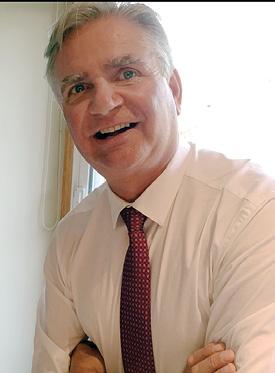
If part of your legacy planning is to support charity, consider enhancing that gift using a life insurance policy. I had a client do that very thing and the amount given to the charity was far more than she had originally planned. She also received tax benefits every year until she passed away through the strategy.
Tom Hyde Estate planning tipsYou should consider having the following in place
Will
The preparation of a will may seem like a daunting task, however, it is essential to ensure that your property is disposed of according to your wishes upon your death. If you pass away without a valid will, the law states what is to happen to your estate.
Power of Attorney
A power of attorney is a document which appoints an individual to handle your affairs in the event you become mentally incapable of making your own decisions. Nothing prevents you from continuing to make your own decisions while you are still competent. A power of attorney is an extremely valuable document to have in place in case anything happens to you which affects your mental ability, such as a stroke, coma or dementia.
Health Care Directive (Living Will)
A health care directive, commonly called a living will, is a document which appoints an individual to make decisions with regard to your health care only, while you are alive but unable to express your decisions yourself. This document is distinct from a power of attorney and deals only with health care decisions such as whether life sustaining treatments, such as CPR or blood transfusion, should be continued or withdrawn.
Standard Fees*
Last Will
Home and are $250.00* (includes both meetings)
Seniors
Having resources available to leave as an inheritance to family can be high on the list for estate planning for some people. If you qualify for life insurance, you can spend your money with peace of mind and still leave a legacy to children and grandchildren. And the benefit can transfer privately outside of the will by-passing probate and estate fees.
Tax Free Savings Accounts (TFSA) were a new thing several years ago and
Tax-sheltered growth in a life insurance policy can be another investment diversification strategy you have not considered. The basic insurance policy has a guaranteed death benefit but there is also upside potential from policy dividends or investment options offered by the insurance companies inside the policy.
TFSA is more liquid than life insurance but there is a cap on the amount you can deposit annually into the TFSA plan.
Capital gains taxes are a hot topic right now and for good reason. Your family wealth has a target on its back! Whether it is business accumulated wealth or recreational property, capital gains taxes are a reality. The taxes are bad enough for well thought out plans, but those taxes may be worse if they are triggered by an unexpected death.
Buying life insurance to cover expected taxes can be a smart strategy, especially if the taxation can be deferred until the transition occurs. The life insurance cheque comes at the same time as the tax bill.
The bottom line is, if you qualify for life insurance at standard rates at any age the numbers can make sense.
Tom Hyde, CAFA, PAg is an estate and financial planner with Pallister Financial.
GST and PST
*Plus GST and PST.
TACIUM VINCENT & ASSOCIATES
206 St. Mary’s Road, Winnipeg, MB R2H 1J3 DAVID G. VINCENT (204) 989-4236
www.taciumvincent.com


In my last article we looked at the economic development in the Central and Southwestern Region, and now I would like to talk about the next largest barrier to growth in our Turtle Mountain Region.
Regardless of sector, labour shortages are the constraint that is holding the region back. Be it in manufacturing, the healthcare industry, education system, or hospitality and tourism industries, everyone is facing the reality that our baby boomer generation is retiring in great numbers and these employees are incredibly hard to replace.

We are facing a shortage of labour in almost every community in southcentral and southwestern Manitoba as our population ages and many of our baby boomers are now in their 60s. We are starting to see even our genXers retiring early creating many vacancies in healthcare, teaching, agriculture and at local manufacturing firms. Many of our manufacturers and agricultural businesses are wanting to expand within rural Manitoba, but they are finding a shortage of skilled workers in their communities.
They are looking for welders, engineers, draftsmen, equipment operators, accountants, administrators, and machinists. We will also need more home construction. When business is growing and able to find the workers, that creates a need for more housing. If a successful hire cannot locate something sufficient for them and their family, they might not choose to take the job, and the employer is back at square one.
At one time our farm families provided teachers and healthcare staff for our local communities; but as farms get much larger, they become a “whole family” affair, and they are now looking for employees from the community.
n o R the R n M anito B a
An operation like Swanfleet Farms (Seed Potatoes), which produces many of the potato seeds for the potato industry, is a good example. This company is owned by the Jonk Family with three generations running the operation and as many as 50 employees during their growing season. They are always looking for employees as their operation continues to expand.
I had the honour of being appointed to the International Peace Garden in 2018 by the Premier at the time and one of the biggest challenges with the garden is to find seasonal workers for the summer. When I was growing up behind the baby boomers, there weren't many summer jobs available because there were so many young people, and there was huge competition to get a summer job. Now it is different. When I grew up, I had three other siblings in a family and most families had an average of four kids during that era. Now in Canada families are having an average of 1.5 kids, there simply are fewer kids to compete for the large number of positions available. Higher incomes due to dual incomes in most families, have created a higher standard of living meaning our youth are in more sports programs and other activities that compete with their time.
I hear so many comments from my generation that young people don’t want to work these days, but the reality is that there are fewer students to fill the positions that are available.
There are a few solutions to address this shortage of labour in Southcentral and Southwestern Manitoba. The first is to focus on encouraging local youth to get advanced education and training to match local occupations. In the past, we educated our youth for jobs only available in larger centres. They do not come back to rural Manitoba, often
because they feel there is no opportunity in their home community to practice the skills they were trained for.
We need to work with our schools to help direct students to get an education for a career they can practice in their communities where they can raise a family and have a good standard of living. There is plenty of opportunity in healthcare, manufacturing, accounting, teaching and so on. The more we fill these jobs the more the opportunities will grow.
One of the hardest businesses to run in rural Manitoba is a restaurant or café. The biggest challenge is finding employees to work during the time the operation is open. When communities depopulate, we see cafes and restaurants closing for good. This then makes the community less attractive to new families. A café or restaurant is where the community comes together to socialize and catch up with neighbours. In communities that have lost their café, some have opened up their centres for morning and afternoon coffee. Other communities such as Darlingford, St. Leon, Pierson, Waskada, Pipestone, Belmont, Mariapolis, Elgin, Medora, and Glenora have created a community business co-op café to address this need.
Growing pressures on the cost of living and the quality of life in large urban communities may also open up opportunities. As young city dwellers learn more about the growing rural economic development, perhaps we can inspire them to move to our small towns and help reverse depopulation. It’s another solution to increase school enrollments and help fill the job vacancies in progressive, growing communities such as Pilot Mound/Crystal City, Killarney, Boissevain, Cartwright, Notre Dame, Ninette, Minto and Manitou.
Doyle Piwniuk is the MLA for Turtle Mountain. His column will be an ongoing feature in Lifestyles to help promote our knowledge and understanding about the amazing things happening in the part of our province.
One of the best kept secrets (not intentionally) in the north is its creative energy and strong production capacity. The wonderful mix of cultures North of 53 encourages to new ways of looking at and delivering artistic endeavours. The recent conference in The Pas energized everyone who attended.
For the second year running, University College of The North (UCN) has sponsored the Northern Arts Workshop, a 4-day-long conference uniting communities from northern Manitoba with industry leaders from across Canada to strengthen and develop our creative economy. This year’s conference took place in The Town of The Pas at UCN’s flagship campus. It was led by facilitator Inga Petri, who specializes in strategy, marketing and planning in arts, culture, and technology. As someone living in the Yukon, Inga is no stranger to the challenges and possibilities that exist for rural communities when it comes to the creative sector.

The conference is the brainchild of the newly launched imagiNorthern Collective and UCN’s president Doug Lauvstad. When I spoke with Doug about why
UCN felt it was important to bring this vision to life he said, “UCN created this workshop to provide a platform to artists, educators, advocates, and others to collaborate in developing and supporting the promise and growth of the arts community in northern Manitoba. Our goal was to create a forum for discussion to amplify the impact, benefits, and value of the arts in northern Manitoba”. imagiNorthern was formed in 2022 and began with the mission of uniting members from arts councils across northern Manitoba with shared goals for their communities. Each community has a designated champion, and the group is now composed of: Churchill, Thompson, Flin Flon, Snow Lake, The Pas/OCN and surrounding communities (Moose Lake, Cranberry, Wanless & Cormorant). In addition to these champions, the advisory board includes guidance from Creative Manitoba’s executive director, Thom Sparling, Manitoba Arts Network’s executive director, Rose-Anne Harder, The City of Flin Flon’s director of the Department of Culture and Community Initiatives,
Crystal Kolt and me, Gabrielle Swan, chair of The Destination Marketing Committee for Town of The Pas.
What makes this workshop so special and different was the fabulous lineup of speakers collected by UCN, including a keynote address by The Right Honourable Michaëlle Jean, who was unable to attend in person but has pledged her commitment to support the project as it progresses. Other presenters who provided much value to the workshop are Theresie Tungilik from Nunavut, the National President for CARFAC (Canadian Artists’ Representation / Le Front des artistes canadiens); Jim Blake from Haliburton, Ontario and the co-founder of the Haliburton County Community-Cooperative; Christine Genier from Yukon, a broadcast journalist, writer, poet, performer an language and culture worker with a focus on bridging culture and recovering Indigenous Space; Artists Jackie Traverse, Ruby Bruce, and Melanie Gamache; Noah Wilson from Futurpreneur, whose focus is on Indigenous finance professionals; and Patricia Eve Martin from Toronto the grant coordinator for Indigenous Youth Roots.
One of the exciting additions to the workshop this year was the collaboration with Food and Beverage Manitoba (formerly the Manitoba Food Processors Association). Katie Damon and Erica Wison are part of the Food and Bever-
Winnipeg’s very first digital radio station is growing and attracting an international audience. Two of our key broadcasters, Alex Regiec, and Chris Golden, have been in England for the last month, but our main cadre is headquartered in Winnipeg. You know some of them quite well, especially Jim Ingebrigtsen who talks to you every month in this paper.
Jim is one of the best-known broadcasters of the past in Winnipeg, beloved for his gentle sense of humour, not to mention his culinary skills. He was a welcome voice
on CBC for many years and a long-time television host of a cooking show. Jim has volunteered with many organizations including the Manitoba Historical Society.
He has two shows on Lifestyles Radio 55, Radio Redux where he talks to and about some of the best musicians from the 60s and 70s, people such as Fred Turner from Bachman Turner Overdrive and Peter Paul Van Camp.
Mid Century Memories – Doo Wop special will take you back on a musical ride that will have your head swimming with memories. As Jim says, “There was no

television in any of the twelve or so houses my family lived in until I was almost thirteen. As such, the only form of electronic entertainment I had was a radio. There, I would curl up close to the speaker and listen to Fibber McGee and Molly, Amos and Andy, and The Great Gildersleeve. That’s also where I fell in love with music.
“Some of the names I became familiar with were the Mills Brothers, Julie London, Doris Day, Frank Sinatra, and the full roster of the time. I thought it would be a good idea when we created Lifestyles 55 Digital radio to play some of the mu-
age Manitoba team who are mandated to support northern initiatives. They led several sessions during the four days highlighting the intersection of arts and food and how and where the creative sector can model itself after the food sector for sustainable growth. In addition to these two dynamic individuals, we also had the pleasure of hearing from Lyn Brown, the owner of Pickled Loon Kitchen in Flin Flon and Lex van Dyck from Winnipeg, the supply coordinator at Fireweed Food Co-op.
Next year’s conference will be held in May 2025 in the City of Thompson. For anyone who wants to support a thriving arts culture in the north and feels they have value they can add, please contact projectmanager@imaginorthern.ca to request an invitation to next year’s Northern Arts workshop.
Gabrielle Swan moved to The Town of The Pas 18-months ago after spending a decade in New York City. She holds a Bachelor of Design from Toronto Metropolitan University with a major in communications and a minor in marketing. Swan brings her love of art and non-profit experience to a community who is most welcoming to an outsider. Swan serves as the Chair of the Destination Marketing Committee, the Treasurer of The Pas Guest List Inc, is a board member of The Pas Arts Council and is a committee member of Imaginorthern.
sic I grew up with. And so, Mid Century Memories it became. Each podcast is filled with familiar songsters and popular instrumentals from the early 1950s to the mid1960s. As I often say during the shows, “not a lot of rock, nor a lot of talk, just great music”.
You can either listen to the programmed episodes at https://live365.com/station/Lifestyles-55-Radio-a75549 or on Buzzsprout which can be reached through https://lifestyles55.net/lifestyles-55-digital-radio/ where you can see the program and choose to listen to your favourites.
Is it true, does Uncle Sam know more about me than I do? Why would he be spying on me? I am told he even listens to my telephone conversations. Does Uncle Sam really care about what I do? Does he care about what you are doing?
Our tale began twenty years ago when my wife and I were crossing the border into the United States. At US Customs, we were informed that our vehicle would be searched while we waited in an adjacent room out of sight of our van. I asked one of the custom officers why they were picking on us. He replied that they had randomly picked us for an extensive search, explaining, it was like winning a lottery.
nals in our families or amongst our acquaintances. There were none that we knew about.
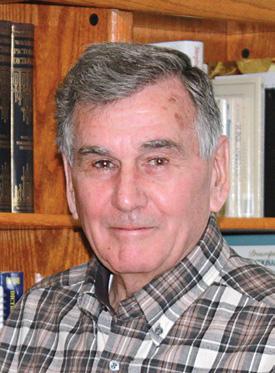
When we entered the waiting room, there was only one other person. She asked us why we were being searched, explaining that she was searched every time she entered the States because her boyfriend, who lived in the USA, was a convicted felon. I truthfully replied that we were being randomly searched. She laughed, telling us they never did random searches. She suggested, we must have done something to raise their suspicions. Neither my wife nor I have criminal records, we don’t do drugs, nor do we participate in any criminal activities. Why would they pick on us?
This lady asked us if we had any crimi-
After nearly three hours we were finally released, with the officer telling us to have a nice trip. Was he being sarcastic? Checking over our van, we could not find any evidence of a search. We had heard tales about people having their vehicles ripped apart and then told it was up to them to put it back together. However, seeing no evidence of a search only increased our anxieties as we wondered if our vehicle had been bugged, or maybe a GPS had been hidden somewhere. We kept asking ourselves if the lady in the waiting room was correct when she exclaimed that Customs never did random searches.
We did not know any US Customs officers, but we did know a few Canadian Customs officers whom we questioned. We got no answers. As I continually thought about the possibility of our van being bugged, I became very determined to get to the bottom of this. I questioned everyone I thought could possibly shed some light on this matter. After several years of pestering people, I finally got the answer I was looking for. I was handed a brown envelope which contained a court transcript and a record of arrest, including a mug
His Excellency Mr. Harsha Kumara Navaratne, High Commissioner for Sri Lanka in Ottawa, swore in Mohamed Ismath (Ismath) as Honorary Consul of Sri Lanka for the Province of Manitoba on March 25, 2024, at the Sri Lanka High Commissioner Office in Ottawa.
Ismath now officially represents the Government of Sri Lanka as authorized by the Government of Canada. Deputy High Commissioner, Her Excellency Ms. Anzul Jhan, assigned the duties to Ismath.
Felicitation Ceremony

Detail of James Montgomery’s art for a World War I United States Army recruitment poster featuring a half-length portrait of Uncle Sam pointing at the viewer. Courtesy of the US Library of Congress.
shot of one of our relatives who lives in British Columbia and has a different surname from us. We had not seen nor communicated with this person nor his family since he was a toddler more than twenty years before. How could Uncle Sam know we were related, and why did he think we were in cahoots with this person who had been convicted of smuggling drugs out of Mexico into Arizona? Under this person’s truck, police had discovered a large quantity of drugs in a compartment which had been painted and disguised to look like original equipment. Besides a hefty fine, the judge gave this smuggler a five-year prison sentence.
Now I wonder, what else does Uncle Sam know about us. What does he know about you? It’s enough to make us paranoid and we wonder if our Canadian government is also spying on us. Where are all these privacy laws? Why are innocent people assumed guilty if they are related to a criminal? Now I am wondering about the rest of our relatives. I had no idea there was a criminal in our family. Why would I? None of our close relatives in Manitoba associate with the criminal side of the family who live in British Columbia. I wondered if some of our relatives had also been stopped and questioned at the border? I’m reluctant to ask them. I would then have to tell them the whole story and they would be certain to ask where I got my information from. The source of that information is confidential.
I wonder, if people knew about Uncle Sam spying on them, would there be less criminal activity? That’s food for thought.
Next Month: Can Canada ever become a democracy?
Wayne Douglas Weedon is a Manitoba author who writes a combination of fictional and factual stories, essays, and novels. Editor’s note: Our van was searched, too. 15 years ago, when I was still just a middle-aged woman, my husband and I were traveling to Minneapolis for a day of shopping with our 82-year-old friend. We were singled out, a less likely group of bandits you have never seen. We thought it was hilarious, although they did confiscate our apples! I have to believe it was random. I know on the Canadian side, they do the same thing.
The Board of Directors of the SLSM organized a cake cutting ceremony and served traditional milk-rice among members. During the vote of thanks, Ismath expressed his gratitude for organizing this ceremony and thanked Senaka Samarasinghe for nominating his name to the Sri Lanka High Commissioner.

The Sri Lanka Seniors of Manitoba organized a felicitation ceremony at Whyte Ridge Community Centre, Winnipeg: (1) to express their desire (2) to announce their continuous and maximum support (3) to execute Ismath’s services to the community according to the expectation of the Sri Lanka High Commissioner to Canada in Ottawa.
Iwould like to say how I enjoyed your article by Wayne Weedon on slavery. Well thought out with fine examples of its history.
What is Mr. Weedon's background?
Alan McTavish
Ienjoy skimming through your paper when I have a minute. There is usually something there as a heads-
Mohamed Ismath Ismath completed his education in Sri Lanka and qualified as an accountant. Later he served in the financial and banking industry. He then immigrated to Winnipeg. He worked as a senior executive in the Canadian automotive industry for thirty years. Now he is retired. Using his skills as a senior executive, he helped to enhance the development of tennis in Manitoba at both recreational and highperformance levels for over 30 years. He currently serves on the Board of Directors of Tennis Manitoba as Past President.
up about recent, or upcoming, local events that make for happy reading. May I ask who this writer "Wayne Weedon" really is? He certainly has a bone to pick with Christians, and his articles – two in your last issue, with one of them taking up nearly an entire page – basically take a baseball bat to our Christian faith. The few facts that he does present – e.g. that Hitler was a Christian (indeed, at one time considered the priesthood) are then used to smear all Christians wiih a wide, disdain-dripping tar-and-feather "brush".
Please instruct Mr. Weedon (the "brilliant writer whose style consists of simple declarative statements that stick in your mind") that there is no need to paint Christians as evil when

Ismath is a founding member of the Sri Lankan Seniors of Manitoba. Pembina Active Living is a leading senior organization in the province of Manitoba and asked SLSM to nominate one of its members to the Board of Directors. Right now, Ismath is the Vice-President of PAL.
He has volunteered for Folklorama since 1998, serving on the Board of Directors since 2007, including two terms as President.
The Sri Lankan Association of Manitoba called for a meeting at Pembina Trails Library with the Sri Lanka High Commissioner H.E. Mr. Ahamed A. Jaward
one Christian goes sour and decides to remain sour. The rest of us know how weak we are, and how quickly we would fall if we didn't keep trying to attend church and to develop our prayer lives.
I had not realized that Lifestyles55 is a paper funded by the Gov't. of Canada. In that case, please desist from printing such articles, and print articles that continue to be uplifting, entertaining and informative about our city and province.
All the best to all of you!
Sister Michaila, SSJ
Dear Readers:
Sister Mchailia asks about Mr. Weeden’s background. He was a late scholar at the University of Winnipeg,
on April 22, 2016. As an attendee at this meeting, Ismath expressed his hands-on long-term experiences of establishing Folklorama and starting a business council.
Visiting Sri Lankan Young Singers in Winnipeg On March 30, 2024, Nuwandika Senarathne, Suneera Sumanga and Lavan Abhishek visited Winnipeg to perform a concert, Dream Voices, at the Centre Cultural Franco-Manitobain. Nuwandika lined up songs in three languages other than Sinhala. She is planning to add more Tamil songs during her next visit. Suneera always asks the audience to sing along with him. Lavan performed as the lead vocalist Chris Martin of the rock band Coldplay.
Two of Nuwandika’s songs were written by Winnipeggers Roshini (Sinhala) and Nisali (English). Layan sang “Gaga Addra”, a Sinhala song. The lyrics were by Augustus Vinayagarathnam. Augustus’ wife and two daughters live in Winnipeg. Nuwandika is young generation lighthouse of Sri Lankan music scene. Her mentor is Prof. Udaya Annakkage, a faculty member at U. of Manitoba.
graduating in 2016. He has written several novels based on his study of history, physics, quantum physics, and metaphysics. He writes of lust, greed, love, kindness, and romance in the modern world but also of the seven traditional sins that predate modern religion, Avarice, Wrath, Gluttony, Envy, Lechery, Pride, and Sloth. He has a mixed indigenous background.
Please also note that we have in the past received small grants from the Government of Canada, but the government does not “fund” us beyond that.
Please note We do not edit the opinions of our columnists as long as what they write does not promote hate or counsel violence. We are happy to print all opinions regardless of political background.
-Dorothy
To celebrate the 100th Anniversary of St. James (starting just west of St. James Street to Sturgeon Road) breaking away from Assiniboia to form their own municipality, I am looking at the history of St. James.
This story deals with a business that started just outside of Winnipeg. In 1919, Roy Allen founded A&W in Lodi, California. One of Allen's employees, Frank Wright, soon became a business partner. The last names of the two started respectively with A and W.
In 1956, Montana natives Richard Bolte and Orval Helwege opened the first Canadian A&W Drive Inn at 3079 Portage Avenue just west of what is now Sturgeon Road. Although Winnipeg is given credit for being home to Canada’s first A&W, the store was actually located in the rural municipality of Assiniboia. Assiniboia’s reeve was Joseph Sansome.
is a long-time friend Jack Johnston. Jack has served over a half century as the Music Librarian at Calvary Temple. Other St. James Assiniboia A&Ws
In 1959, A&W opened a root beer stand at 1866 Ellice Avenue. On opening day, the customers got free root beer with the purchase of a burger. George Diacos was the longtime manager of A&W Ellice. After about 30 years, A&W Ellice closed.

Fred Morris From the desk of a gadfly
A&W Canada has been independent of A&W in the United States since 1972. A&W Canada currently has 1060 locations with 45 in Manitoba. A&W has a partnership agreement with the Toronto Blue Jays. Since 2018, Susan Senecal has been CEO of A&W Canada. Let us look at a little bit of the St. James Assiniboia A&W history including my personal connection to “the Dub”.
Root beer, especially in a cooled mug, remains the cornerstone of A&W. The root beer has long complemented a great selection of food including the “Burger Family”, in store made onion rings and an interesting breakfast menu. A&W has given away or sold many promotional items including teddy bears, T-shirts, antenna balls, flying onion rings, baby bibs and car stickers. A&W advertising has featured Albert & Walter, the Great Root Bear, and the A&W Guy Allen Lulu.
My years at A&W Kirkfield
Between May 3, 1971, and July 8, 1974, I worked at Canada's original A&W. Most A&W’s were still drive inns. The lots used to fill with cars. There was sometimes non-stop horn honking. Car hops had the difficult task of making sure that the mugs were accounted for.
In Kirkfield, Harry Newbury was the area manager. Harry grew up on Roseberry Street and attended Assiniboine School. Harry invented the whistle dog, a hot dog with the wiener split down the centre, butterflied, and fried, and served with mustard, relish, onions, and bacon. The whistle dog was discontinued in 2016. In 2022, the whistle dog made a brief and triumphant return. Hopefully the whistle dog will soon permanently return.
During my years at Kirkfield, I worked with many talented people. The kitchen was anchored by Madalyn Saddler, Kelly Larson, Ruby Opperman (now Ruby Morris), and Joyce Kelunick. Mildred Gogush worked as a car hop and in the front room. Other car hops were Ann Horvath, Judy Pringle, Kathy Appleton, and Gail Bond. The managers included Al Price, Dale Hoffman, and Peter Teerhuis.
One Sunday 1972 autumn evening, I remember meeting our new assistant manager, Cliff Fogg. Cliff and I became instant friends. He shared with me his interesting perspectives about the restaurant business and world affairs.
During these three years, many locally well-known people visited the restaurant. The visitors included MP Dan McKenzie, NDP Cabinet Minister Len Evans, Annis Stukus of the WHA Jets, teacher Harry Pauls, and the family of Winnipeg Blue Bomber head coach Jim Spavital. One of my favourite memories happened late one Friday night. Nick Mickoski and the Winnipeg Junior Jets of the Western Canada Junior Hockey League dropped in for burgers at the start of one of their long bus trips.
In 1974, I was involved in an assistant manager trade. I was sent to Inkster and Main. John Drapala moved to Kirkfield.
On June 15, 2006, I was honoured to attend a 50th Anniversary Celebration at 3095 Portage. I reconnected with Wayne Gowryluk, A&W’s director of operations. During my time at A&W, Wayne, then the manager of Goulet Store, used to visit our store in his fancy car.
The first Canadian A&W with various renovations, rebuilds, and an address change to 3095 Portage operated for 59 years at the original location. In March 2015, the store moved slightly east to 3011 Portage Avenue at Sturgeon Road. (Wendy’s is now located at 3095 Portage.) I still regularly visit the 3011 Portage Avenue store. One of A&W's current regular customers
In 1997, A&W formed a partnership with Petro Canada. There is currently an A&W inside the Petro Canada Location at 2607 Portage Avenue.
During the much of the first 15 years of A&W in Canada, the Canadian head office was located in St. James. The addresses included 2481 Portage Avenue, 1763 Portage Avenue and 1666 Dublin. During the early 1970s, the Canadian Head office moved to North Vancouver. After the departure of the Canadian head office, regional offices have been located at 435 Berry Street, and 1313 Border.
In 2018, I found it ironic that A&W opened a new store very close to the long departed Canadian Head office on Dublin. On December 18, 2018, A&W
opened a sparkling new innovative store across from Red River College at 1636 King Edward on Winnipeg’s major north south route. The new store has various types of seating including booths, stools, handicapped accommodation, and some outdoor seating. There is a handwashing sink for customers of all ages. Since 2008, A&W has raised funds to provide support for people with MS and MS research. A portion of every Teen Burger sold on Burger-to-Beat-MS-Day goes to this cause.
Some More of the People who have worked at A&W in St. James Assiniboia and the neighbouring West End Stores
Car Hops: Kathy Maxwell, Jeannette and JoAnne Taylor (twins), Betty Anne Newbury, Janis Fogg. Norma Dagg, Terry Brownrigg, Pat Leathwood, Gerry Kilborne, Kathy Maxwell, Janis Bates.
Inside Employees: Vereen Webb, Carol Davis, Keith Irvine, Carol Fines
Managers: Frank Bell, George Martin, Al Price, Peter Teerhuis, Greg Johnson, Mike Gulyas, Craig Falconer
Arlington Street Bridge Update
150 Days of No Decision as of April 18, 2024. Fred Morris is a Grandfather, Sports Fan and Political Activist.






As we celebrate Winnipeg’s 150th birthday, each month music historian and author John Einarson will share stories from our city’s rich and colourful music history. Enjoy.
Yvette Dandaneau
Singer Yvette Dandaneau was born in St. Pierre, Manitoba and moved to Winnipeg at age 13 to pursue a singing career. She sang with the Jimmy King Trio at the Royal Alexandra Hotel where she was spotted by CBC’s Ray McConnell who hired her. Yvette became the CBC’s #1 vocalist, appearing on almost all their locally produced music shows. With CBC, Yvette was able to sing on both the English and French networks. She proved to be a versatile singer, capable of imitating the popular singers of the day for soundalike recordings. According to jazz aficionado and owner of The Record Room, Richard Zurba, “Yvette was the nearest thing to Peggy Lee in Winnipeg.” In 1969 Yvette recorded a single composed by Zurba entitled “That Was A Day” backed by Dave Shaw on bass, George Reznik on piano, and drummer Reg Kelln.

short Mia Farrow-style haircut. Fellow CBC singer Karen Marklinger recalled, “People used to go to their hairdressers and say ‘I want an Yvette haircut’.”
Married to musician Dave Shaw, Yvette retired from performing in 1981 when Dave became ill. She has occasionally appeared at special reunion events.
Len Cariou
Yvette and had a very recognizable image with her
Another local singer who caught his break on local CBC television music productions is Len Cariou. Born in the Norwood neighbourhood of east Winnipeg and raised in East Kildonan, Len’s first public appearance was at Rainbow Stage. He also sang in Winnipeg clubs with the Len Cariou Quartet (drummer Owen Clark, Marv Bales on guitar, and Cam Fairfield on piano). As both an actor and a singer, Len appeared in several local musical theatre productions. In 1968 he made his Broadway debut (Broadway New York, that is) and never looked back, earning Tony Award nominations appearing with the likes of Lauren Bacall, Elizabeth Taylor and Angela Lansbury with whom he won a Tony for Sweeney Todd: The Demon Barber of Fleet Street. His list of theatrical productions is peerless. He has an equally impressive list of movie and television credits, most recently in

the long running television series Blue Bloods. Still a singer at heart, Len has returned to Winnipeg to perform for the hometown crowd on several occasions.
Ed Evanko
Singer/actor Ed Evanko followed a similar path to Len Cariou, only to make a sharp right turn. The child of Ukrainian immigrants to Winnipeg, at age thirteen Ed’s vocal abilities first shone at the annual Winnipeg Music Festival. He went on to appear at Rainbow Stage where his love of acting grew. In 1961, Ed moved to the UK where he trained at the Bristol Old Vic Theatre School and sang with the English Opera Group and the Welsh National Opera. Back home in Winnipeg in 1967, Ed hosted his own CBC television show. He would go on to appear in a number of Canadian television shows and to record Broadway musical albums for Capitol, RCA, Decca, and Destiny Records. He appeared on Broadway in “Canterbury Tales” and “Rex”, his Broadway debut earning him a Theatre World Award, a New Jersey Drama Critics Award, and a Los Angeles Ovation Award nomination. Ed also performed at Ukrainian festivals across Canada.
In 2001, despite a rising career in music and theatre, Ed answered a higher calling, choosing instead to become a Ukrainian Catholic priest, a role he fulfilled for the rest of his life both in Manitoba and British Columbia. He passed away in November 2018.
Ihave been thinking about the way the spaces that we make for different types of activities in our communities shape the nature and character of our population. When we invest in public spaces that provide opportunities for learning, community development, inspiration, collective projects, and access to the cultural resources of human history, we transform the way community members engage with each other and massively improve the quality of life for everyone.
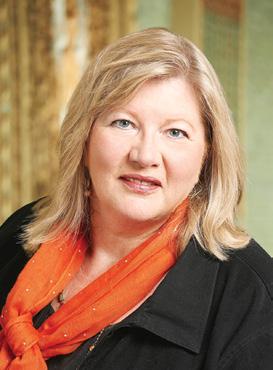
In recent years, I have been working with communities in various parts of Manitoba to consider ways in which the lives of citizens could be enhanced by increased arts and cultural programs and opportunities. In so many Manitoba towns, there could be a flourishing of art, theatre, dance, and music, if there were access to a facility developed to encourage this part of community life. How could something like that happen in rural and remote Manitoba communities? Considering this dilemma has made me think about the proliferation of libraries around North America and the United Kingdom through the generosity of Andrew Carnegie.
From 1903 to 1922, business leader and philanthropist Andrew Carnegie
gave grants to build 2,509 libraries in communities around the world. Most of the libraries were built in the United States, 650 libraries were built in the United Kingdom and Ireland, and Canada was fortunate to benefit from grants for 125 libraries, 111 of which were built in Ontario. Winnipeg has three Carnegie libraries.
The William Avenue Library was the recipient of a $75,000 grant, and the Cornish Branch and St. John’s Branch shared a grant of $35,000. The St. John’s Library and the Cornish Library are still in service, but the former central library on William Avenue was closed in 1995. The space has since been used by the Provincial Archives.
These libraries were built on the “Carnegie Formula”, which required financial commitments for maintenance and operation for the community that received the donation. Most communities that applied for funding for a library received funding from the Carnegie Foundation. The local government was required to meet the following criteria:
• Demonstrate the need for a public library.
• Provide the building site.
• Pay staff and maintain the library.
• Draw from public funds to run the library – not use private donations only.
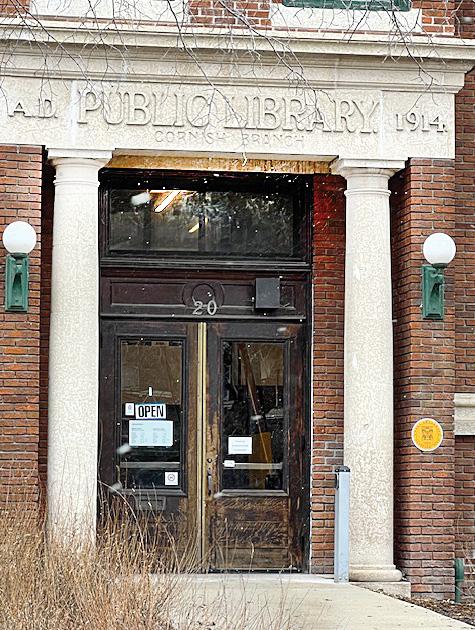
• Annually provide ten percent of the cost of the library’s construction to support its operation; and,
• Provide free service to all.
Apparently in 1902, Carnegie offered $2.5 million to build 125 libraries in Canada. Most Canadian cities at first turned him down, and then eventually agreed to accept the funding.
Architectural criteria included a lecture room, reading rooms for adults and children, a staff room, a centrally located librarian’s desk, twelve-to-fifteenfoot ceilings, and large windows six to seven feet above the floor. The architect and architectural style were left to the
community to determine, and it was not necessary to put Andrew Carnegie’s name on the building.
What an extraordinary legacy of learning and access to books was left by this one individual who was able to benefit from access to a library in his youth.
Like many of the industrialists at the time, Andrew Carnegie’s legacy is also complicated. He was apparently brilliant, charming, generous – and brutal. He made his fortune in steel and railroads, and his treatment of his workers as he was building his fortune was terrible.
One of Carnegie’s biographers reports that Carnegie’s response to workers requests for higher wages was to say, “If I had raised your wages, you would have spent that money by buying a better cut of meat or more drink for your dinner. But what you needed, though you didn’t know it, was my libraries and concert halls. And that’s what I’m giving to you.”
We don’t have any philanthropists that I know of offering to create public spaces for the creation of art in Manitoba’s rural and remote communities, but perhaps we could inspire our community leaders to consider an investment of this type. We would all benefit from spaces to tell our stories, sing our songs, and display Manitoba artists. I’m keeping my eyes open for a modern-day Andrew Carnegie. Any ideas?
Trudy Schroeder is the former CEO of the Winnipeg Symphony Orchestra and twice ran for the provincial NDP.
The Murray Auto Group, which is just two years shy of Its 100th anniversary, is not only one of our province’s family-run auto dealers, second only in longevity to Ford dealer Metcalfe Garage in Treherne, which was founded in 1911, but also one of the largest and most successful dealerships in western Canada.

Myron Love
Celebrating 150 years of Winnipeg
Currently, the Murray Group numbers 14 stores in its home province and another 16 throughout the other three western provinces. “Having multiple stores is like having an investment portfolio,” observes Dan Murray, dealer principal at Murray Chevrolet in the Waverley Auto Mall. “We are always looking to add more stores to our portfolio – but also sell those that aren’t the right fit.”
Dan and his brothers, Doug (in Brandon), Paul (Calgary) and Chris (Lethbridge) are the third generation to lead the family business. I have known the Murray Family for close to 30 years – in particular, Dan and Doug and their late father, Clare – and I can tell you that they are among the nicest people I have ever met.
The Murrays are the kind of people others love to work for. Murray Chevrolet in Winnipeg has been recognized many times over the years by General Motors for outstanding achievement, has consistently been ranked as one of Canada’s best managed companies, is and among Canada’s top employers as voted by the dealership’s own employees. Once a year, Dan and his general managers have an employee recognition lunch during which most employees are recognized for achievement in their fields as well as longevity with the store. Retired staff are regularly invited back for any celebratory events.
The Murray family and their many dealerships also generously support many activities in their communities. Examples would be large donations to Murray House in Brandon, Assiniboine Community College, The Brandon and Area Community Foundation, Ronald McDonald House in Winnipeg, Royal Canadian Air Museum, Nature Conservancy Canada, Ducks Unlimited, Samaritan House Brandon, Helping Hands Brandon, and more.
The Murray Group, the oldest GM franchisee in Canada, was founded by, A.A. (Andy) Murray in Souris in southwestern Manitoba in 1926. Originally a farm implement dealer, Andy soon began selling motor vehicles as well, specifically Star, Essex and Hudson models.
Now the fundamental need for any business to be
Looking for a place to call home that’s affordable, safe and accessible?

able to continue in as a family-owned business is to have children in each new generation who are willing to assume leadership roles. Andy was fortunate to have three sons, Ewart, Clare and Del, who worked alongside him in the business.
In 1934, the family became General Motors dealers. The two older brothers concentrated on the automobile side of the business while Del looked after the farm implement side.
In 1960, Clare took the family’s first leap forward when he acquired Pontiac Buick GMC dealer Brandon Automobiles in Brandon. In 1971, he sold the Pontiac store and opened Murray Chevrolet Oldsmobile Cadillac also in Bandon.
“Dad loved the car business,” Dan says. “He was very much involved throughout his life, putting in seven days a week into his early 80s.”
Clare passed away in 2014 at the age of 89.
It was at the Murray Family flagship store where Dan and his brothers learned the business. Doug joined the company right out of university in 1980, and now he serves as dealer principal of the Brandon Chevrolet store.
Dan started at the Brandon store in 1984 and opened the first location in Oak Bluff in 1988. In 1994, he bought the former Carter Motors GM store in downtown Winnipeg. Four years later, he relocated the GM store to the newly opened Waverley Auto Mall at Waverley and Bishop Grandin.
Of course, relying only on family members to run a family business does limit one’s expansion possibilities. Dan notes that it was his Dad, Clare, who developed the system that has allowed the Murray Auto Group to overcome that limitation.

Look no further than Fred Douglas Chateau (formerly Kiwanis Chateau)!
• Life Lease independent living for 55+ in a close-knit community.
• Prime location with indoor access to shopping, dining, medical services, arena, the Y and Millennium Library.
• security and emergency response services for added peace of mind.
• spacious one-bedroom and two-bedroom options available.
• features include in-suite washer and dryer, balcony enclosures, and heated parking.
• suites can be customized according to your preference.
• Cat-friendly.

“Rather than putting general managers in charge of new dealerships when they were built or acquired, Dad offered long time management staff at our pre-existing stores the opportunity to become full partners in the new dealerships,” Dan points out.
The first such transaction came in 1986, when the Murray Family opened a new store in Portage la Prairie and partnered with the Murray Chev Brandon sales manager to operate the store.
Also key to the Murray group’s continued success in recent years, Dan notes, is the role that CFO Arthur Fast has played the past 25 years.
Certainly, the last four or five years have been challenging for auto dealers across the country. “We are living in uncertain times,” Dan observes. “The COVID-19 lockdowns led to ongoing inventory shortages. Manufacturers have been introducing more stipulations. And the slow uptake of electric vehicles creates uncertainty as to whether to invest in the upgrades we would need for an unpredictable EV future.
“Nonetheless, we remain optimistic about our future as evidenced by our recent acquisition as Shaganappi GM, Calgary’s largest MGM dealer.”
As well, the Murray Group is about two officially open its brand-new Genesis Winnipeg store. Genesis is Hyundai’s luxury line.
Dan Murray reports that the Murray Auto group is working on plans for a 100th anniversary celebration in two years time. “We are planning a big party,” Dan says. “We will be inviting all of our past present and future customers to come celebrate with us and allow us a chance to show our appreciation to loyal customers.”
Manitoba Lifestyles 55 salutes the Murray Group on this, Winnipeg’s150th birthday!

How do you want to be remembered, and what is the legacy you will leave behind?
At Children’s Hospital Foundation of Manitoba, we’re so grateful for the generous group of dedicated donors have decided to make a meaningful impact for children and families who rely on Manitoba’s children’s hospital and research institute by committing to a legacy gift.
Donors like the Loeppky family, who created an endowment fund after needing HSC Children’s Hospital themselves. In 1995, then six-week-old Jackson Loeppky started experiencing cold-like symptoms, getting sicker and sicker. Doctors at HSC Children’s diagnosed Jackson with respiratory syncytial virus (RSV), a lung infection that can cause serious illness and breathing issues and is sometimes fatal in babies. He spent two weeks in hospital recovering and relying on a ventilator and medications from an IV. His family is deeply grateful for the health care team who looked after Jackson.
say, Jackson’s dad. “With this overwhelming sense of gratitude, our family later discussed ways to donate to the Children’s Hospital.”

“We felt comforted with the knowledge everything possible was being done to keep him alive,” says Lind-
There are many ways to make a legacy gift, to support kids now and into the future. For instance, Diane Boyle, a longstanding supporter of Children’s Hospital Foundation has also made a commitment in her Will to help transform child health care and research.
“It gives me a feeling that I’m still able to help for years and years to come,” says Diane. “That’s what’s important about a legacy gift – people making those kinds of gifts should be happy that the good work will continue because of their support.”
The power of a planned gift is that your support will last well beyond your lifetime, something donor Cynthia Menard says impacted her decision.
“When I first heard about leaving a legacy, right away in my heart I knew this was the right thing to do,” says Cynthia. “Children are our future, and we have to look after them. We have to love them and help them move forward in a positive way. They
Another first: The Canadian Animal Blood Bank started in Winnipeg
Afew things are consistently true in veterinary medicine in Manitoba – one of these is that busy season kicks off when spring comes around. While in most general practices, this primarily means touching base about the wellness of a huge number of patients, and an influx of requests for tick and heartworm prevention (do you have yours yet?), it can also mean an influx of injuries, toxicities and disease acquired when we are out and about adventuring with our pets. As such, it’s a good time to be reminded that there is a constant need for blood, and in Manitoba, we are lucky to have access to the Canadian Animal Blood Bank (CABB).

in 1996 when the very first donor clinic was held, although it was then known as the Manitoba Animal Blood Bank. They have since expanded to help meet national demand for transfusion products – from whole blood to plasma –although the main headquarters remains in Winnipeg! The blood bank also maintains a close working relationship with Red River College Polytechnic, where many of the wonderful local registered veterinary technologists have trained.
The CABB is a not-for-profit organization with a pretty neat Winnipeg connection. It originated in Manitoba
The need for these transfusion products has skyrocketed since the pandemic. In the spring and summer, as well as during holiday periods, there is a significant disconnect between the need for blood, which increases, and the number of donors, which decreases. Every day, animals require transfusion
Continued from page 1
successful. Last year there was a CITO every month. Winter’s blanket of white did not deter us and there was trash disposed of. There are several already planned for this year, so come on out and join the group. If you have a gripper stick (also known as a “reachy” stick) bring it along, it makes picking up trash easier.
Events are only limited by a host’s imagination (and the occasional rule) and can be a lot of fun. Be sure to check out your locale for events be it Winnipeg, Dauphin, Brandon, Steinbach, Morden/Winkler… well, you get the picture.

may never meet me. They may never know what I look like, but there’s someone out there that’s thinking about them, and I want them to have a future.”
Legacy donors like the Loeppky family, Diane and Cynthia join the dedicated group in the Annie. A. Bond Legacy Circle – named as a tribute to the founder of Children’s Hospital – who have chosen to support the Foundation with a planned gift such as:
- A gift in their Will
- Life insurance
- Gifts of real estate
- Beneficiary designations on pension funds
- RRSPs
- RRIFs
- TFSAs
- Charitable gift annuities
- Reminder trusts
- Endowment funds
To begin the conversation on what planned giving options are right for you, speak with your financial planner and contact the Foundation’s annual giving manager, Courtney Nodrick, at 204-894-9043 or cnodrick@goodbear.ca.
Stefano Grande is the president and CEO of Children’s Hospital Foundation of Manitoba.
therapy for a variety of reasons. A single blood donation can help as many as three animals.
Just like in people, dogs have different blood types. CABB will check the blood-type of any potential donor. Dogs that are DEA1-negative are considered the universal donor. Certain breeds are more likely to be universal donors, including American Bulldogs, Great Pyrenese and Siberian Huskies. A full list can be found on the CABB website. If your dog is DEA1-negative, their blood is particularly precious! Although every blood donation is immensely helpful.
Of course, it takes a special canine to donate blood. First and foremost, as most donor sites are veterinary clinics, they shouldn’t be too afraid or wary in this environment, and they should be okay interacting with strangers. Donations aren’t painful but they do require the dog to lay still for a period of time. The CABB also has specific criteria for their donors including - Dogs must be between the ages of
There are some signature events in Manitoba annually. Oak Hammock Marsh has had some nice ones that are fun and have presented a bit of a challenge. Unfortunately there will not be an event this year because of necessary construction happening on the premises, but keep an eye on them for some action after the renewal has happened out there. Even though the Discovery Center is presently closed for construction, the caches on the marsh are still in place. It is always a great place to visit.
On July 20th the MBGA will be hosting a “Hands Across The Border” event at the International Peace Garden. This is an opportunity for anyone that cannot travel into the US for various reasons such as a lack of a passport to collect Geocaches in the US. There will be cachers from both countries there. Check https:// peacegarden.com/ for admission and what is necessary to return to Canada.
one and eight years old.
- Dogs must weigh a minimum of 25kg.
- Dogs must be otherwise healthy.
- Dogs must be up to date on vaccines (or titers), and should be on yearly tick and heartworm preventatives. Does your dog seem to fit the bill and have what it takes to be a hero? Clinics are always looking for new heroes! Contact your veterinarian to check on their vaccine status and inquire about upcoming donor clinics! You can also visit the CABB website to learn more. Just before signing off, here’s another fun fact for you. Cats can be donors too! Though there is no central blood bank, emergency hospitals are often looking for help from our feline friends. Until next time fellow paw-print loving friends!
Silver Heights Veterinary Hospital is proud to serve the Winnipeg region, and is located on Ness Avenue in St. James. Contact them at 204-504-5600 or visit their website at silverheightsvethospital.ca
save the date will come out this summer. Watch for it and plan to be at this event, it is worth attending.
The Fort Whyte Adventure will happen on June 8th and is a fun time exploring the site for another fourteen new caches. This year there are a lot of prizes to top off a fun day of Geocaching.
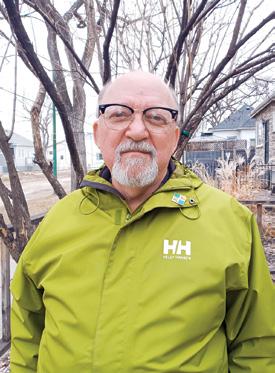
The Assiniboine Zoo will have their annual event in the fall. The exact date hasn’t been announced yet, but the
For those who like to travel there are Geocaching events listed on the geocaching.com site almost everywhere. Our neighbors are quite active and would love to welcome you as we do them. I look forward to meeting you in conversation at an event somewhere in this wonderful land we live on.
Gary Brown is the President of the Manitoba Geocaching Association (MBGA) and can be reached at mbgaexec@outlook.com.
•
•
•
Ed: Canadian Border Services prefer that you have a passport or a Nexus card, but they will accept your Manitoba Driver’s Licence. Have a second piece of ID just to be safe. – Dorothy.

The Winnipeg Symphony Orchestra has announced its 2024/25 season. With plenty of classics, more matinées, exciting Live concerts, lots of movies, fantastic guest artists and collaborations with communities, there really is something for everyone at the WSO.
“The 2024/25 season marks my seventh year as Music Director of the WSO, and I have high expectations for this ‘lucky number’ season!” says Daniel Raiskin, WSO Music Director. “I'm thrilled about the astounding array of worldclass artists who will join and inspire our orchestra and audiences.”

The Saturday Classics series continues to feature masterworks and renowned guest soloists conducted by Music Director Daniel Raiskin. The season opens with Manitoba’s own James Ehnes playing the violin and the viola. Also appearing are Armenian pianist Marianna Shirinyan and internationally recognized Anna Geniushene. And Canadian-born, Berlin-based cellist Bryan Cheng returns to wow WSO audiences once again. The series features Tchaikovsky’s passionate Symphony No. 6 and Mahler’s enchanting Symphony No. 4. The final Saturday Classics concert celebrates Concertmaster Gwen Hoebig featuring Debussy’s La Mer and Strauss’s Till Eulenspiegel.
The popular Thursday Classics series offers diverse programming, shorter
concerts, pre-concert performances by musicians in the making, and postconcert Q&A lounges. Chopin Piano Competition-winning Canadian Charles Richard-Hamelin joins the WSO to play… Chopin, of course. Canadian guest conductor Tania Miller is joined by former WSO principal tuba player Chris Lee for Winton Marsalis’ Tuba Concerto. The third concert features a work by contemporary American composer Christopher Rouse and award-winning trumpet player Simon Höfele. World-renowned violinist Rachel Barton Pine performs the world premiere of the latest work by the WSO’s composer-in-residence, Haralabos [Harry] Stafylakis. This series ends with guest conductor Leslie Suganandarajah leading the WSO for Beethoven’s Fourth Symphony.
The UnTuxed series offers matinée performances of select works from each Thursday Classics concert, with informative and interactive discussions of those works from the stage.
New this season is a much-requested classical matinée series. For over fifty years, Shirley Loewen was a devoted patron of the arts and an ardent supporter of the WSO. Thanks to the generosity of her husband Bill and children Howard, Ann, Louise, Peter and Jen, the WSO is able to present the Shirley Loewen Sunday Classics series, dedicated to her memory. These matinées are a second


chance to experience some of the season’s beloved Classics concerts.
And, by popular demand, The WSO continues its traditional holiday presentation of Handel’s Messiah, this season offering three performances at the magnificent Knox United Church.
About the 2024/25 season's Manitoba Liquor Marts Live at the WSO concerts, Jean Francois (JF) Phaneuf, the Director of Artistic Planning at the WSO, emphasizes, "From the unique blend of fashion and virtuoso violin with Thorgy Thor to the soulful melodies of Aretha Franklin performed by soloists Capathia Jenkins, to the iconic music of Queen performed by Finnish sensation Rajaton, each performance promises a distinctive and vibrant experience for our audiences!"
The exciting BMO Night at the Movies with the WSO series features a blockbuster roster of iconic films on the big screen while the WSO plays the score LIVE! This year’s movies include Star Wars: The Empire Strikes Back, the 1925 silent movie version of The Phantom of the Opera, The Princess Bride, Star Wars:
Return of the Jedi, and Harry Potter and the Deathly Hallows Part 1.
The WSO plays the POPS like you remember!
The Manitoba Liquor Marts Live at the WSO Matinées series offers another new afternoon concert experience. These concerts are presented in POPS format, showcasing the talented WSO and local artists. Concert-goers can reminisce about 70 Years of WSO Pops, including a performance of Gershwin’s Rhapsody in Blue. They can celebrate A Prairie Christmas and explore the Orchestra Through the Ages with comedic notes sprinkled throughout by comedian Lara Rae. Music lovers are encouraged to visit wso.ca, pick up a 2024/25 season brochure at one of this season's remaining concerts, or call the Box Office at 204949-3999 to subscribe to their favourite series before May 31 for the greatest savings. Subscribing to the newsletter will ensure that WSO fans looking for single tickets will be first to find out when they go on sale.
One of our favourite times of the year is when we fire up the barbecue for those first few mouthwatering bites of fresh food cooked on the grill. The sounds of sizzling hit the air, the smoke slowly rises, the aroma of the grill bites at your nose, and you know you are in for a treat. Something truly yummy is grilling!
 Ian Leatt Foodies
Ian Leatt Foodies
The versatility of chicken knows no bounds and this dish will have you wanting it time and time again. Bruschetta chicken is a dish that brings you the freshness of flavour, and the umami you crave, from the gooey cheesy mozzarella to the acidic punch of fresh home-made bruschetta. The summer flavours with all the fresh ingredients make this dish outstanding and a joy to have throughout the season. A great favourite for family and friends.
Here is what you will need:
4 boneless skinless tenderised chicken breasts to even thickness
4 tbsp. extra-virgin olive oil
Juice of 1 lemon
Salt & pepper to taste
Freshly ground black pepper
1 teaspoon Italian seasoning
6 roma tomatoes finely chopped.
2 cloves garlic freshly crushed.
2 tablespoons freshly chopped basil.
3 tablespoons balsamic vinegar
4 hearty slices fresh mozzarella
Freshly grated parmesan
The all important how to:
First, we tenderize the chicken with a gentle mallet ensuring it is all at an equal thickness. Then we marinate, combining in a small bowl, half the lemon juice, salt, pepper, and Italian seasoning and mix thoroughly. Place all ingredients inside a large ziploc bag including the chicken; seal and place in the fridge for at least one hour.
Turn the grill on to a medium-high, (setting the temperature in and or around 350° F) then spray a little oil on the grill before placing chicken. Grill, turning the chicken after 7 minutes then grill for a further 7 minutes. The chicken breast is cooked when the internal temperature is 165° F.
While the chicken is grilling, combine the chopped Roma tomatoes, garlic, basil, and remaining lemon juice, and season with salt and pepper. When chicken is almost cooked, top each breast with a generous slice of fresh mozzarella and cover until cheese is fully melted.
Remove the chicken from the grill and serve. Top chicken with fresh bruschetta then drizzle over a

Why not celebrate the coming of spring than with a BBQ?
little balsamic vinegar and a little shaved fresh Parmesan, to give it that final boost of flavour. Serve with fresh new potatoes and fresh garden salad. Ian Leatt is a trained chef from across the pond.
As one who has been a lifelong student of history, I have sometimes wondered what it would have been like to travel back in time and experience life in different eras and cultures. While the technology for time travel does not yet exist, the Barony of Castel Rouge does offer modern a sampling, beyond historical TV series and movies, of what life was like in the medieval world.
I first (and last) wrote about the Barony of Castel Rouge roughly 40 years ago for a publication called Winnipeg Magazine. So, it was lovely sitting down BCR citizens Amanda and Neil Whiteley and learning all over again about the role-playing community.
According to Amanda and Neil, and BCR’s history from the community’s website, the Barony is one of the member groups of the international Society for Creative Anachronism (SCA) which was founded in 1966. It was in 1970 that one Ardythe Packer came into contact with SACA members at a Worldcon (science fiction) convention, became interested in the concept and started a chapter here.
you can become anyone you want to be, she notes, as long as your character is derived from the world as it was before 1600 and is not based on a real historical person.
“For years, our characters were all from European history from the Middle Ages (circa the 5th to the end of the 16th century).” Amanda says. “In recent years, we have expanded our criteria beyond Europe and from any time before 1600. Our current Baroness, for example, is from the Fatimid period of Egyptian history.”
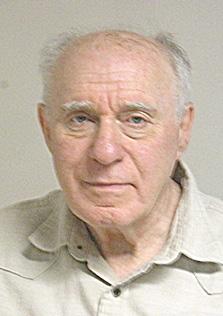
Amanda, who is the barony’s seneschal (administrator) reports that the Barony of Castel Rouge encompasses an area that includes all of Manitoba. It is part of the Kingdom of Northshield, which includes Manitoba, Northwestern Ontario as far east as Thunder Bay, North and South Dakota, Minnesota and part of Wisconsin.
Amanda and Neil both became citizens of the Barony while university students here. After many years living away, she as a civil servant in Ottawa and he as a member of Canada’s military, they retired three years ago and returned to Winnipeg where they immediately rekindled their citizenship in the BCR.
“We were welcome back with open arms,” Amanda says. “It was as if we never left.”
Citizenship in the Barony is open to one and all. And
Amanda’s persona is based on a 4th century British Roman model while Neil is kitted out as an 8th century Vendel.
Amanda points out that Barony of Castel Rouge members largely create their own apparel choices – or get help from fellow members with the necessary specialized skills. She, for example, shows off her flowing robe that she herself has done in the style of a cultured woman from her era.
Neil has the armour and weaponry of a typical Vendel from his chosen time. His helmet is modeled after one found at the Valsgarde archaeological site in Sweden. Neil’s helmet is inspired by the helmets found at Valsgarde – with modifications for purposes of safety. The interior, for example, has soft padding and the visor has bars across the mouth and eyes for added protection.
Some of our activities do feature combat with solid rattan swords,” Amanda points out, “but we focus strongly on safety.” All martial activities – also including fighting with lighter rapiers and archery – takes place under the watchful eye of marshals (of which Neil is one) and at a safe distance from spectators. Women do engage in sword fighting as well as men, although the heavy swordplay does require greater strength than some other activities.
The extent of each member’s period apparel depends on what the member chooses. Some members may opt to wear only simple tunics. The period clothing members may reflect one’s status in society – be they individual
knight or squire, master weaver or apprentice, for example.
There is a strong educational component to all the Barony’s activities comprising of research into one’s characters and era and the development of different skills and crafts. “We have activities for all age groups including children,” she adds. “Some SCA members in our kingdom are third generation citizens of the organization.”
While there is a membership fee, one doesn’t have to be a member to participate in the Barony’s activities, many of which are free. Membership bestows on the citizens of the barony of Castel Rouge a discount on events that do require payment.
There are activities a couple of times a month. “Once a week, some of us engage in arts and craft programs together,” Amanda says. “During the COVID-19 lockdowns, we began having our programs on Zoom and we continue to do so for some of them. It cuts down on the costs of renting facilities and allows more people to participate.”
There are two major annual events in the life of the Barony of Castel Rouge. The first is “12th Night” which is held in early February and is a celebration of the new year. The second is the three-day gathering at Gimli on the Labour Day weekend. This year’s theme is “Constantinople to Istanbul”.
“Both are a lot of fun,” Amanda notes.
Amanda and Neil and other BCR members also go to Society for Creative Anachronism gatherings elsewhere in North America. Six members of BCR, for example, including the Baron, recently returned from trip to Mississippi to participate in the annual Gulf Wars XXXII, which is held about 45 miles east of New Orleans. Gulf Wars includes a youth combat tournament.
The big one though is Pennsic War, an annual two-week Medieval re-enactment, which takes place in the fall at Cooper’s Lake in Pennsylvania and attracts up to 15,000 participants from around the world.
Readers who may be interested in learned more about the barony of Castel Rouge, can contact Amanda at seneschal@castelrouge.ca
Continued from page 1
but there is one underlying commonality and that is the adoption of socialist policies tied to excessive government spending, which led to eventual economic destruction. Canada, too, is undergoing such a gradual change and without a significant course correction it will eventually devolve.
Another significant consequence of excessive government spending is the accumulation of public debt. When governments consistently spend beyond their means, they must finance budget shortfalls by borrowing from domestic or foreign creditors. Over time, this accumulation of debt can become unsustainable, leading to a sovereign debt crisis with severe repercussions for the economy.

High levels of public debt can crowd out private investment, as governments need higher revenues to finance spending and to cover ever growing interest payments. Since investors become wary of lending to governments with precarious fiscal positions, governments are forced to sell their debt at ever increasing interest rates, which then in turn increases interest rates for everyone else, reducing consumer and business borrowing via mortgages, leases, and on credit cards, and thus reducing spending and capital expenditures in the economy. This phenomenon, known as the “crowding out” effect, can stifle economic growth and hinder long-term productivity. Today in Canada we have both extreme government spending and yet a very low gross domestic product, or GDP, growth rate, which means that without the government’s spending the county would technically be, and for all intents is, in a recession.
Moreover, servicing a burgeoning debt burden requires diverting a significant
portion of government revenue towards interest payments, leaving fewer resources available for essential public services such as healthcare, education, and infrastructure. This not only exacerbates income inequality but also undermines social cohesion and economic development. The Government of Canada has blatantly ignored spending prudently thus far, which will eventually force it to spend more on interest and less of social services and infrastructure. No doubt, significant cuts will be forced onto the government as the cost of its borrowing continues to rise. Because the Government of Canada has recently provided new nationalized public goods, like day cares, tax rebates, and additional health care services, not to mention massive supports for immigrants, I can predict with near certainty that when the government is forced to cut these public services due to a lack of money, that there will be massive social unrest equivalent to what is typically seen in France – violent public demonstrations that destroy property or worse.
While proponents of government spending often tout its role in creating jobs and stimulating economic activity, the empirical evidence suggests a more nuanced relationship between fiscal policy and employment dynamics. While fiscal stimulus measures may indeed provide a temporary boost to employment in certain sectors, such as infrastructure construction or public works projects, the long-term sustainability of these jobs is often questionable. Excessive government spending can distort labor markets by misallocating resources towards less productive sectors like expanding government services that could
otherwise be provided more cheaply and innovatively by the private sector. Governments tend to support artificially propping up industries, like wind or solar energy production, that are otherwise uncompetitive with oil and natural gas. While an argument can be made for using clean energy, this is a moot point in the face of China and India burning record amounts of coal, wood, and dung as primary sources of energy. Further, the government’s picking of economic winners can impede the process of creative destruction, whereby lower government spending and taxation allows a market demand-based allocation of resources to more dynamic sectors, fostering innovation and productivity growth. Because Canada suffers from both high taxation and extreme government spending, drowning out the private sector, it consistently ranks as one of the least productive G7 nations in the OECD, faring better than only France and Italy.
Moreover, the inflationary pressures associated with excessive spending can erode real wages and diminish the purchasing power of workers, exacerbating income inequality and reducing overall economic welfare. In the long run, these adverse effects can outweigh any short-term employment gains, leading to structural imbalances and economic inefficiencies.
At its core, the impact of excessive government spending on overall economic stability is profound and far-reaching. By distorting price signals, misallocating resources, and undermining investor confidence, fiscal imprudence can sow the seeds of financial instability and economic downturns, and, if unchecked, economic ruin.
High levels of inflation erode the value of savings and investments, discouraging household and business spending and dampening consumer confidence. This can lead to a vicious cycle of declining economic activity, falling asset prices, and rising unemployment, culminating in a full-blown
recession or even depression.
Furthermore, the accumulation of public debt creates vulnerabilities in the financial system, as investors become increasingly concerned about the government’s ability to service its obligations. A sudden loss of confidence can trigger a liquidity crisis, as investors rush to liquidate their holdings, leading to a sharp increase in borrowing costs and a contraction in credit availability.
Thus, excessive government spending carries dire consequences for the economy, ranging from inflationary pressures and debt accumulation to employment dynamics and overall economic stability. While fiscal stimulus measures may provide short-term relief during periods of economic downturn, the long-term costs of unsustainable spending commitments can outweigh any temporary benefits. Canadians are, unfortunately, bearing witness to the impacts of successive annual budgets that feature unrestrained fiscal imprudence that will lead to the country’s economic, and thus, societal demise.
Policymakers must therefore exercise prudence and foresight in managing public finances, ensuring that government spending is targeted, efficient, and sustainable. By striking the right balance between fiscal stimulus and fiscal discipline, we can promote long-term prosperity and economic stability for generations to come.
Romel Dhalla, is President of Dhalla Advisory Corp., provides strategic corporate finance advice to companies and high net worth individuals and was a portfolio manager and investment advisor with two major Canadian banks for 17 years. Contact him at romel@ dacorp.ca. Any views or opinions represented in this article are personal and belong solely to the author and do not represent those of people, institutions or organizations that the owner may or may not be associated with in professional or personal capacity, unless explicitly stated. Any views or opinions are not intended to malign any religion, ethnic group, club, organization, company, or individual.
Ihave rarely written anything related to music in this publication. That is best left in the hands of our city’s emanate musicologist, John Einarson. The following, however, was sent to me by and old friend and I can not help but share it with you. I am dedicating it to another old friend, Winnipeg’s own Big Dave McLean. He’s a guy who knows the blues and lives the blues.
This is the “Rules of the Blues” written by Memphis Earlene. (Earlene Gray)
1. Most Blues begin ‘‘Woke up this morning...’’
a good woman with the meanest face in town. She got teeth like Margaret Thatcher and she weighs 500 pound.
4. The Blues are not about limitless choice. You stuck in a ditch, you stuck in a ditch … ain’t no way out.
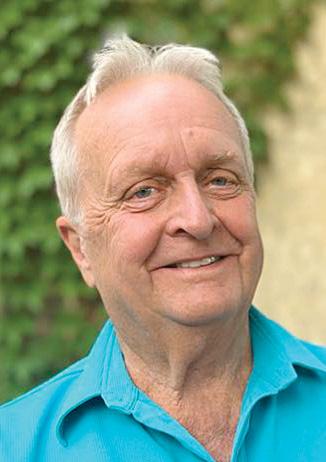
2.‘‘I got a good woman’’ is a bad way to begin the Blues, unless you stick something nasty in the next line like, I got a good woman with the meanest face in town.”
Jim Ingebrigtsen
3. The Blues is simple. After you have the first line right, repeat it. Then find something that rhymes … sort of: “Got a good woman with the meanest face in town. Yes, I got
5. Blues cars are Chevys, Fords, Cadillacs and broken-down trucks. Blues don’t travel in Volvos, BMWs or Sport Utility Vehicles. Other acceptable Blues transportation is a Greyhound bus or a southbound train. Walkin’ plays a major part in the Blues lifestyle. So does fixin’ to die.
6. Teenagers can’t sing the Blues. They ain’t fixin’ to die yet. Adults sing the Blues. In Blues, “adulthood” means being old enough to get the electric chair if you shoot a man in Memphis.
7. You can have the Blues in New York City, but not in Brooklyn or Queens. Hard times in Vermont or North Dakota are just depression.
Chicago, St. Louis, and Kansas City are still the best places to have the Blues.
8. A man with male pattern baldness ain’t the Blues. A woman with male pattern baldness is. Breaking your leg while skiing is not the Blues. Breaking your leg ‘cause a alligator be chompin’ on it’ is.
9. You can’t have the Blues in an office or a shopping mall. The lighting is wrong.
10. Good places for the Blues: a. Highway b. Jailhouse c. Empty bed d. Bottom of a whiskey bottle.
11. Bad places for the Blues: a. The Bay b. Art gallery openings. c. The theatre. d. Golf courses.
12. No one will believe it’s the Blues if you wear a suit ‘less you happen to be an old person and you sleep in it’.
13. You have the right to sing the Blues if: a. Your first name is a southern state. b. You blind.
c. You shot a man in Memphis. d. You can’t be satisfied.
14. You don’t have the right to sing the Blues if: a. You have all your teeth. b. You once were blind but now can see. c. You have a pension fund. D. The man in Memphis died.
15. Blues is not a matter of colour. It’s a matter of bad luck. Tiger Woods cannot sing the Blues. Sonny Liston could. Ugly white people also got a leg up on the Blues.
16. If you ask for water and your darlin’ gives you gasoline it’s the Blues.
17. If death occurs in a cheap motel or a shotgun shack it’s a Blues death. Stabbed in the back by a jealous lover is a Blues way to die. So is the electric chair, substance abuse or dying lonely on a broke down cot. You can’t have a Blues death while playing tennis or while getting liposuction.
18. Some Blues Names for Women: a. Sadie b. Big Mamma c. Bessie d. Fat River Dumpling
19. Some Blues names for Men: a. Willie b. Joe c. Little Willie d. Big Willie
20. Persons with names like Michelle, Amber, Debbie and Heather can’t sing the Blues no matter how many men they shoot in Memphis. May 2024 marks the beginning of Jim’s 6th year contributing to Lifestyles 55. You can listen to Jim’s podcasts on Lifestyles 55 Digital Radio where you can hear a ton of songs with the name “Memphis” in it.
The following story is part a new feature, a fictional work by our columnist Wayne Weedon, Child abuse. Wayne is a brilliant writer whose style consists of simple declarative statements that stick in your mind as he leads you through an intricate web of circumstances to reach the lesson he set out to teach.
Note: The contents of this story deals with religion and may offend some people. You may wish to avoid reading it.
Pregnant and deserted by her lover, a young girl moves in with her grandfather. When the baby boy is born, the grandfather agrees to look after him so his granddaughter may go to work. Despite the age difference, the relationship between the boy and his great-grandfather was more like two siblings than that of an adult and child. As this boy grew into a young man, he loved to look back and tell stories about his great-grandfather, whom he always called “Pops”.
When I came home, I told Pops about how I got into trouble at school, “When Judy told me I would go to hell because I was never baptised, I told her there was no hell, no heaven, and no God, and it was all just a fairy tale. When Judy told the teacher what I said, I got into trouble.”
Pops surprised me when he told me that things were improving. He told me what had happened to him at school, “In those days, each morning in school, a passage from the Bible was read out-loud. One morning when we had a substitute teacher, the Bible passage was about Noah and his ark. I stated it was just a fairy story and this teacher went berserk. He hauled me to the front of the class, pulled out the black strap and beat my hands black and blue on both the front and on the back. He was like a man-gone-wild.”
“Did the teacher get into trouble?”
“No. In those days it was against the law to question the veracity of the Bible, so I was in the wrong, and the teacher had every right to beat me. Today, teachers are no longer allowed to hit children, and in December 2018, Canadian blasphemy laws were finally repealed. Atheists may finally come out of the closet.”
Pops continued, “Several years later, Hannah, a friend of mine, explained how people will often go berserk when someone questions their irrational beliefs. This teacher was desperately trying to believe what he logically could not believe. He was paranoid about going to Hell if he stopped believing. He became violent with anyone who opposed him.”
According to Hannah, besides this acute berserk behaviour, there is chronic berserk behaviour and going berserk by proxy. In the chronic form, people blow off steam on a regular basis, so the pressure never reaches the point to cause them to blow up. Going berserk by proxy is someone watching and enjoying another person going berserk. Berserk by proxy allows bullies to put across an image of them being nice, non-violent, people, when, in fact, they are full of schadenfreude, which, Hannah told Pops, is a German word that has no English equivalent. This word refers to a person’s
enjoyment in watching pain and suffering in others. Bullfights, cockfights, boxing, and hockey are all forms of berserk by proxy. The audience enjoys the blood but convinces themselves that these activities are just healthy competitions and games.
Pops first met Hannah when he was working on a grain elevator maintenance gang. She was a spinster schoolteacher living in Toronto who came back to Plum Coulee every summer vacation to visit with her widowed grandmother. One Sunday, Hannah came into the grain elevator where Pops was doing his work while the elevator wasn’t in operation. Hannah made a strange request. She asked Pops if she could ride the man-lift to the top of the elevator. Pops explained to her that there was over two-hundred pounds of counterweight, she could easily go up on the man-lift, but she would never be able to pull herself down. When she begged, Pops consented, telling her the two of them together would probably equal the counterweight. To ride up they needed to squeeze tightly against each other which made Pops a bit uneasy. Hannah stepped off and stood silently gazing at an overhead wooden beam for a few minutes. When they got back down, she explained to Pops how her friend had gone up and hung himself from the beam above them.
Pops had assumed she had been saying a silent prayer, but she laughed and told Pops she was an atheist who did not believe in prayers. She just wanted to remember her friend Joe. This shocked Pops because, in those days, in Canada, anyone who admitted to being an atheist in public could have been arrested and sent to prison on charges of blasphemy.
Hannah told Pops Joe’s story, first explaining how most people living around Plum Coulee were German speaking Protestants, but, to the east, the inhabitants were French speaking Catholics. There was animosity between the two groups. On Saturdays, it was common for young men from the Morden-Winkler area to come to Queen’s Hotel in Plum Coulee to have a few beers and look for a fight. One evening when the beer parlour closed for supper hour, a group of these young men came into the restaurant where Hannah was alone with a customer, Joe, a French speaking Catholic who was working on the railway. One of the bigger fellows made fun of Joe’s accent and told him to get back into the ditch with his frog relatives. This brought a hoot of laughter from the others. Joe, being half the size of this fellow, just got up and walked away. But, the loudmouth, begging for a fight, and backed by his friends, followed Joe outside where they grabbed onto Joe and threw him into the ditch. Later that night, Joe hung himself. Hannah explained that this German speaking group were chronically berserk. They enjoyed slamming opponents up against the boards while playing hockey, and looking for a fight after they had a few beers.
Hannah related Joe’s troubling background which led to his suicide. He had gone to his father for help and support. He told his father how he had witnessed two priests sexually abusing his younger brother. His father went berserk, beating Joe until he lost consciousness as he yelled that priests don’t do such things. Joe was ordered to never mention this affair again.
A while later, Joe came across a tiny announcement hidden on page 16 of the Winnipeg Free Press dated March 30, 1946, “Starbuck Man Jailed: Sentence of 23 months in jail was imposed on Lionel Joyal, 34, of Starbuck, Man., after he pleaded guilty before Magistrate D. G. Potter, in provincial police court, Friday, to four charges of gross indecency.”
Joe went to the police, telling the officer on duty that this man who had been convicted was one of two priests who had abused his younger brother in the church vestry. The reason this priest from Starbuck was in town was to help the local priest with a funeral mass which called for two priests to officiate. The police officer seemed sympathetic as he politely listened to Joe’s request to have this second priest arrested. The officer then escorted Joe home where he told Joe’s father that his son needed to be straightened out as he was making up stories about priests. Even before this police officer was out the door, Joe’s father was already undoing his belt buckle. Soon after, Joe left home and got a job on the railway. That’s how he ended up in Plum Coulee.
After Joe’s suicide, Hannah began asking questions and soon found out that one of several boys being abused by Joyal was the nephew of Father Lucien Vinet, a priest, who publicly stated that Joyal has met his Waterloo. Vinet demanded that Joyal be prosecuted to the full extent of the law. These actions resulted in Vinet being defrocked and excommunicated. He had placed his nephew’s welfare above his own livelihood.
Hannah made it a point to meet with Vinet who stated it was a shame the newspaper did not give the whole story along with the accuser’s name. If they had done this, Joe may have come to him instead of the police, and Joe would be alive today.
Under Pops advice, the next day when I was at school, I apologised to Judy, and I told her how I appreciated her concerns about my suffering in Hell. Pops believed it is best not to be dogmatic and force one’s opinions onto others. Judy seemed shocked, but she accepted my apology, and she has never mentioned religion to me again. I suppose that’s a good thing.
Next Month: Hannah in Toronto
Wayne Douglas Weedon is a Manitoba author who writes a combination of fictional and factual stories, essays, and novels.

Creative Retirement Manitoba Inc. 204-481-5030, hello@crcentre.ca www.crcentre.ca
20 Fort Street Seniors Club
2200-20 Fort Street / FortStSeniors@Shaw.ca
Pembina Active Living (55+) 170 Fleetwood Rd. / 204-946-0839 office@pal55plus.ca / www.pal55plus.ca
Rady Jewish Community Centre 123 Doncaster Street / 204-477-7539 lmarjovsky@radyjcc.com / www.radyjcc.com
Stay Active - Stay Connected
www.manitobaseniorcommunities.ca
Seniors’ Outreach Services of BrenWin Inc. 204-747-3283 sosbrenwin@gmail.com sosbrenwin.com
ERICKSON
A&O Support Services for Older Adults Inc. 200 -207 Donald Street 204-956-6440 / Toll Free: 1-888-333-3121 info@aosupportservices.ca www.aosupportservices.ca
Archwood 55 Plus 565 Guilbault Avenue / 204-416-1067 archwood55@shaw.ca https://archwood55plus.wildapricot.org/ Bleak House Centre 1637 Main Street / 204-338-4723 bleakhousecentre@gmail.com www.bleakhousecentre.com
Brooklands Active Living Centre 1960 William Avenue W 204-632-8367 / bpscc@mymts.net
Centro Caboto Centre 1055 Wilkes Avenue / 204-487-4597 ext. 1 executivedirector@cabotocentre.com www.cabotocentre.com
Charleswood Active Living Centre
5006 Roblin Blvd / 204-897-5263 info@charleswoodseniorcentre.org www.charleswoodseniorcentre.org
Crescent Fort Rouge 55 Plus 525 Wardlaw Ave. / 204-299-9919 cfruc55Plus@gmail.com www.crescentfortrouge.ca
Dakota Community Centre 1188 Dakota Street / 204-254-1010 ext. 217 melissal@dakotacc.com www.dakotacc.com
Dufferin Senior Citizens Inc.
377 Dufferin Avenue / 204-986-2608
Elmwood East Kildonan Active Living Centre 180 Poplar Avenue / 204-669-0750 healthrelations@chalmersrenewal.org https://chalmersrenewal.org/
Fort Garry Seniors Resource Council 200 - 270 Donald Street / 204-792-1913 fortgarry@aosupportservices.ca www.aosupportservices.ca/resources/seniorsresource-finders
Golden Rule Seniors Club 625 Osborne Street / 431-866-6776 goldenrule@swsrc.ca
Good Neighbours Active Living Centre 720 Henderson Hwy / 204-669-1710 admin@gnalc.ca / www.gnalc.ca
Gwen Secter Creative Living Centre 1588 Main Street / 204-339-1701 becky@gwensecter.com / www.gwensecter.com
Headingley Seniors’ Services 5353 Portage Avenue / 204-889-3132 ext. 3 seniors@rmofheadingley.ca www.headingleyseniorsservices.ca
Indigenous Senior Resource Centre Inc. A1- 100 Robinson Avenue / 204-586-4595 executivedirector@isrcwpg.ca www.asrcwpg.ca
Manitoba Korean 55+ Centre 900-150 River Avenue 204-996-7003 / www.ksam.ca
North Centennial Seniors Association of Winnipeg Inc. 86 Sinclair Street / 204-582-0066 ncsc@shaw.ca / www.ncseniors.ca
North Point Douglas Seniors Association 49 Euclid Ave. / 204-880-1655
Rainbow Resource Centre 545 Broadway / 204-474-0212 ext 255 OTR@rainbowresourcecentre.org www.rainbowresourcecentre.org
The Salvation Army Barbara Mitchell Family Resource Centre 51 Morrow Avenue 204-946-9153 sheila.keys@salvationarmy.ca
South Winnipeg Seniors Resource Council 117-1 Morley Ave / 204-478-6169 resources@swsrc.ca / www.swsrc.ca
Southdale Seniors 254 Lakewood Boulevard / 204-257-6171 gm@southdale.ca / www.southdale.ca
Sri Lankan Seniors Manitoba 113 Stan Bailie Drive 204-261-9647 / www.srilankanseniorsmb.ca
St. James-Assiniboia 55+ Centre 3-203 Duffield Street 204-987-8850 / info@stjamescentre.com www.stjamescentre.com
St. Mary’s Rd. Seniors 613 St. Mary’s Rd., Winnipeg 204-257-0678 / www.stmarysroad.ca
Transcona Council for Seniors 845 Regent Ave / 204-222-9879 tcs@mymts.net / www.transconaseniors.ca
Transcona Retired Citizens Org. 328 Whittier Ave. West 204-222-8473 / trco328@shaw.ca
Vital Seniors - 3 St Vital Road 204-253-0555 / stmary@mymts.net www.stmarymagdelenewpg.org
Winnipeg Chinese Senior Association 204-291-7798 / wcsa.wpg@hotmail.com www.winnipegchineseseniors.ca
Winnipeg Condominium Corp #238 3281 Pembina Hwy / 204-269-6363
BEYOND WINNIPEG
BEAUSEJOUR
Beau-Head Senior Centre 645 Park Avenue 204-268-2444 / beauhead@mymts.net
BRANDON
Brandon Seniors for Seniors Co-op Inc. 311 Park Avenue E / 204-571-2050 reception@brandons4s.ca www.brandons4s.ca
Health Checks - 204-728-1842 brandonmbhealthchecks.ca healthchecksbrandon@gmail.com
CARMAN
Carman Active Living Centre 47 Ed Belfour Drive / 204-745-2356 www.activelivingcentrecarman.ca
CRANBERRY PORTAGE
Jubilee Recreation of Cranberry Portage Legion Hall 217 2nd Ave. SE / 204-271-3081
CRYSTAL CITY
Crystal City & District Friendship Club Inc. 117 Broadway St. / 431-867-0122 crystalcityfriendship@gmail.com
DAUPHIN
Dauphin Active Living Centre Inc. 55 1st Avenue SE 204-638-6485 www.dauphinseniors.com
DELORAINE
Deloraine Community Club Inc. 111 South Railway Ave E 204-747-2846
Comfort Drop In Centre 31 Main Street 204-636-2047 / areas@mymts.net
FLIN FLON
Flin Flon Seniors 2 North Avenue / 204-687-7308
GILBERT PLAINS
Gilbert Plains and District Community Resource Council Inc. 204-548 4131 gpdcrc@mymts.net www.gpdcrc-newhorizons.wix.com/gpdcrc
Gilbert Plains Drop In Centre 22 Main Street North / 204-548-2210
GIMLI
Gimli New Horizons 55+ Centre 17 North Colonization Road 204-642-7909 / gimli55@mts.net www.gimlinewhorizons.com
GLADSTONE
Gladstone Seniors Inc. 32 Morris Ave. North / 204-385-2205
GRAND MARAIS
Grand Marais & District Seniors 36058 PTH 12 / gmdseniors@gmail.com www.gmdseniors.ca
GRANDVIEW
Grandview Seniors Drop In 432 Main Street / 204-546-2272
HAMIOTA
Hamiota 55+ Centre & Restore Community Co-op Inc. 44 Maple Avenue / 204-764-2658
KILLARNEY
Killarney New Horizons Centre 520 Mountain Avenue www.killarneymbseniors.ca
Killarney Service for Seniors 203 South Railway / 204-523-7115 seniorservice@killarney.ca
LA BROQUERIE and STE. ANNE
Seine River Services for Seniors Inc./ Services Rivière Seine pour aînés Inc. 93 Principale Street 204-424-5285 / labseinerss@gmail.com seineriverservicesforseniors.ca
LUNDAR
Lundar Community Resources 35 Main Street / 204-762-5378 lcrc@mymts.net
MANITOU
Pembina Community Resource Council 315 Main Street 204-242-2241 / pembinacrc@gmail.com
MINNEDOSA
Minnedosa Senior Citizens Assoc. 31 Main Street S 204-867-1956 / mdsasca@gmail.com
MORDEN
Morden Activity Centre 306 N Railway Street 204-822-3555 mordenactivitycentre@gmail.com www.mordenseniors.ca
NEEPAWA
Neepawa Drop In Centre 310 Davidson Street / 204-476-5103 Neepawa-dropin@outlook.com www.neepawa.ca/district-drop-in-center
PILOT MOUND
Pilot Mound Fellowship Centre 203 Broadway Avenue / 204-825-2873
PLUMAS
Plumas Seniors Citizens Club Inc.
102 White Street / 204-386-2029
PORTAGE LA PRAIRIE
Herman Prior Senior Services Centre
40 Royal Road N. / 204-857-6951 hermanpriorcentre@gmail.com www.hermanprior.com
Portage Service for Seniors 40A Royal Road N. / 204-239-6312 https://portageservicefors.wixsite.com/psfs
RIVERTON
Riverton Seniors Activity Centre 12 Main Street / 204-378-5155 rdfc@mymts.net / www.rivertonfc.com
SANDY LAKE
Sandy Lake Drop In Centre 100 Main St. / 204-585-2411
Municipality of Harrison Park - Age Friendly Initiative Committee 204-585-5310
SELKIRK
Gordon Howard Centre 384 Eveline Street / 204-785-2092 executivedirector@gordonhoward.ca www.gordonhoward.ca
SNOW LAKE
Snow Lake Senior Centre 71 Balsam Street 204-358-2151 / snowsrs@mymts.net
STARBUCK
MacDonald Services to Seniors 204-735-3052 / info@mcdonaldseniors.ca www.macdonaldseniors.ca
STEINBACH
Pat Porter Active Living Centre 10 Chrysler Gate 204-320-4600 / ed@patporteralc.com www.patporteralc.com
STONEWALL
South Interlake 55 Plus 374 1st Street West - Oddfellows Hall 204-467-2582 / si55plus@mymts.net www.si55plus.org
SWAN RIVER
Swan River & District Community Resource Council 126 6th Ave N / 204-734-5707 resourcecouncil@srseniorservices.com
Swan River Senior Citizens Centre 702 1st Street North / 204-734-2212 THE PAS The Pas Golden Agers 324 Ross Avenue / 204-623-3663 seniorsthepas@gmail.com
THOMPSON Thompson Seniors Community Resource Council Inc. 4 Nelson Rd. / 204-677-0987 thompsonseniors55@gmail.com thompsonseniors.ca
TREHERNE
Treherne Friendship Centre 190 Broadway Street 204-723-2559 / jstate1066@gmail.com
VICTORIA BEACH
East Beaches Social Scene 3 Ateah Road / 204-756-6468 ebssinc1@gmail.com https://www.ebseniorscene.ca East Beaches Resource Centre 3 Ateah Road / 204-756-6471 ebresourcec@gmail.com https://ebresourcec.weebly.com
WINKLER
Winkler & District MP Senior Centre 102-650 South Railway Avenue 204-325-8964 director@winklerseniorcentre.com www.winklerseniorcentre.com

Today's retirees are getting increasingly younger, often empty nesters, and 55+ seniors looking for a lifestyle with flexibility, low maintenance and security. They want to be able to take extended trips and not have to worry about leaving an empty house. They don't want the responsibility of home and yard maintenance. They are looking for a sense of community and support that will allow them to maintain their independent life.
If you are in any of these situations, you might want to consider life lease accommodation.
you terminate the lease. Remember that you are not purchasing any part of the real property, only the right to reside there for as long as you live.
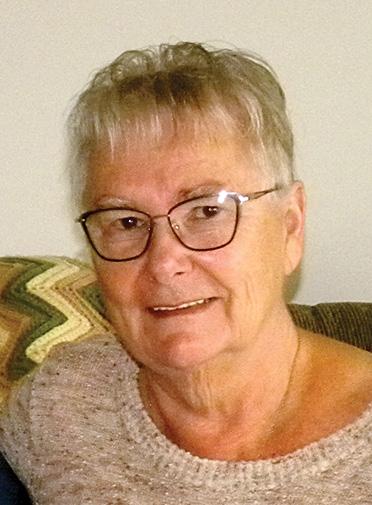 Lori Blande Life Lease news
Lori Blande Life Lease news
The life lease model is a relatively new concept in North America, although it has a long and successful history in Europe.
In Manitoba, the life lease concept was developed in response to the anticipated housing developments during the nineties and into the new millennium. And with recent data predicting a major increase in the 55+ demographic over the next decade, this points to a life lease as an excellent option.
All life lease projects are not the same. They vary across Canada and within Manitoba, and are misunderstood more often than not. This article aims to provide some key information to help you better understand the concept.
Most life lease projects are developed, owned and run by a sponsor group, such as a service club (i.e., Lions, Kiwanis, Rotary), a church group, or an ethnic organization. Sponsor groups operate as nonprofits, and the rental costs are generally lower than the going market rate for a comparable unit in a 'regular' rental building. Individual resident(s) are granted the life lease in accordance with a written lease agreement that details the costs, rights and obligations of all parties, as well as any regulations governing the life lease (i.e., The Life Leases Act, The Residential Tenancies Act).
The basic tenet of the life lease agreement gives the lessee “the right to occupy the residential unit for as long as you live".
There are three main types of life lease facilities.
1. The most common life lease is a rental agreement that requires an initial payment called an entrance fee. That fee is invested, and any interest garnered is reinvested in the life lease facility. You do not receive any interest, but the fee is refunded when

Entrance fees and rental costs vary depending on the age and circumstance of the facility. Generally, the rental or lease rate is based on the apartment/unit's proportionate share of the operating expenses, capital expenses and debt servicing costs, as well as a base rental fee.
The lease is for the life of the tenant(s) signing the lease, which means you cannot re-assign your lease on termination. Instead, the lease reverts back to the sponsor organization.
2. A market value life lease facility is more of an 'investment' in the rental unit.
In this case, your lease is assignable, which means you can decide to whom you want to ‘sell’ that lease when you vacate the unit. Remember that you still do not own any part of the real property and may only 'sell' the assignable lease subject to the terms of the lease agreement.
The opportunity to 'sell' the assignable lease on the market gives you a chance to
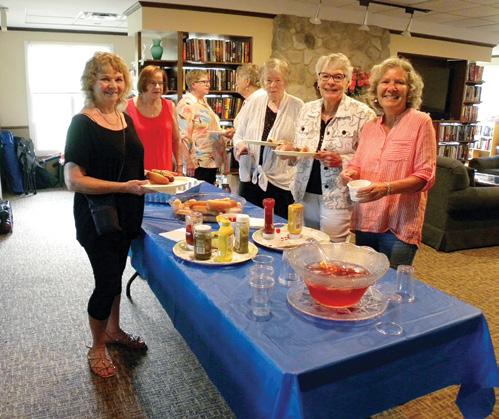
recapture any renovation costs and possibly make a profit. Keep in mind that this is based on markets at the time of sale, and may also result in a loss of investment if markets are poor. You are usually responsible for the rental costs until the lease is 'sold' and assigned to a new tenant.
3. There are also some for-profit life lease facilities, but they are an exception, and not covered here in this article.
If you are considering a life lease opportunity, the main things to keep in mind are:
• Life lease units are not condos – you don't own them.
• Units are normally furnished with appliances, just like regular rental suites.
• The facilities generally have more amenities and common areas, such as
clubrooms, hobby and exercise rooms, and some underground parking.
• You also have more of say in what goes on in your building. Typically, there is a residents' council/association that organizes social activities, which creates a sense of community. You actually get to know your neighbours, and you have a small but mighty support group right next door.
There are more than 100 life lease complexes in major cities and smaller rural towns and villages throughout Manitoba. And according to the Canadian Mortgage and Housing Corporation, complexes sponsored by non-profit organizations are becoming an increasingly popular housing option.
If you are interested in the life lease option, feel free to contact us at the Manitoba Life Lease Occupants Association (MLLOA). We are a non-profit organization with a membership of forty life lease complexes in Manitoba. We also provide education and governance resources, as well as monitoring legislation affecting life leases. For more information, visit our website at www.mlloa.ca.
Watch for future articles on life lease living, The Life Leases Act, and more.
Lori Blande is a Member at Large on the board of MLLOA Living in a life lease in Winnipeg.



